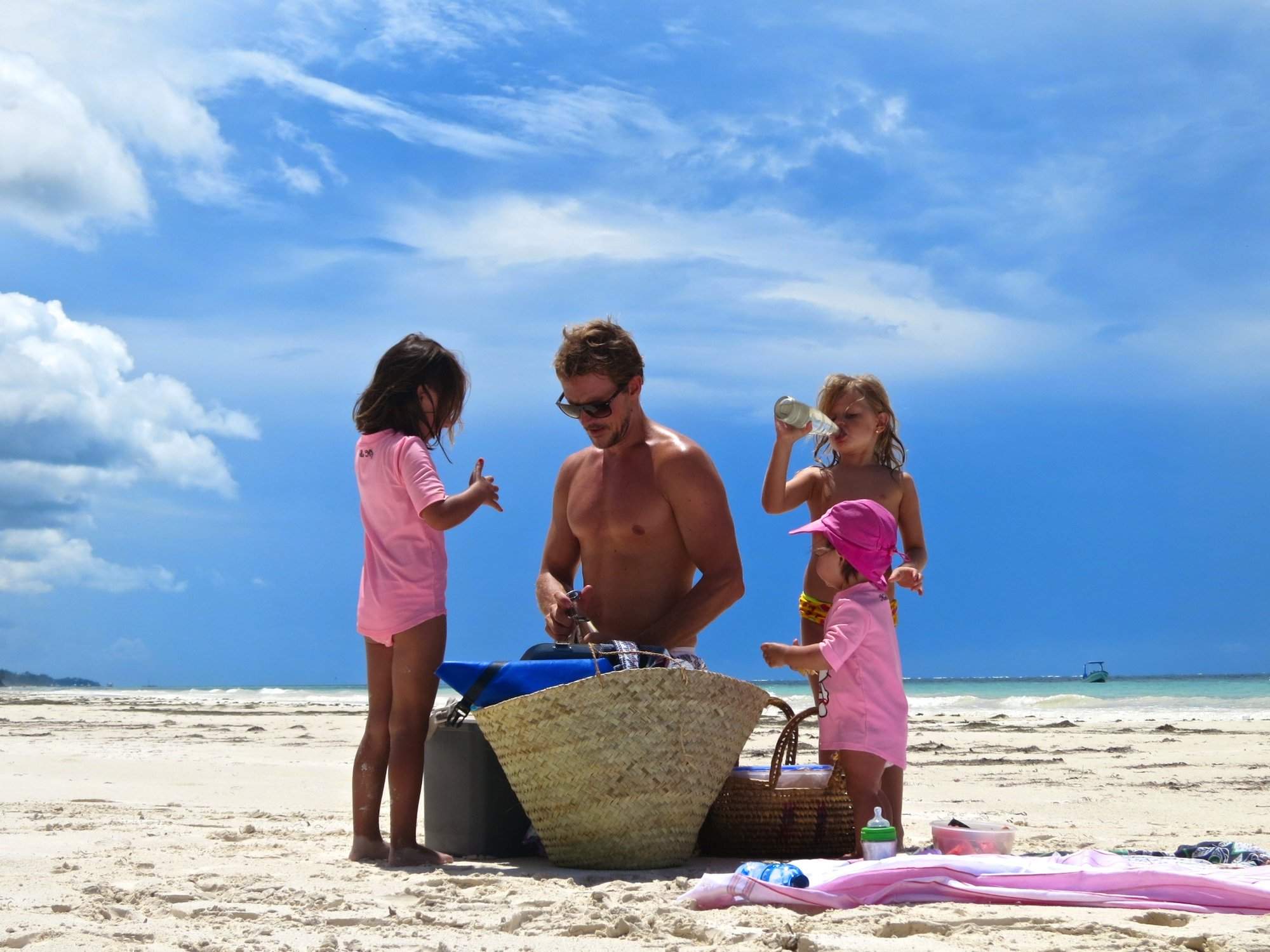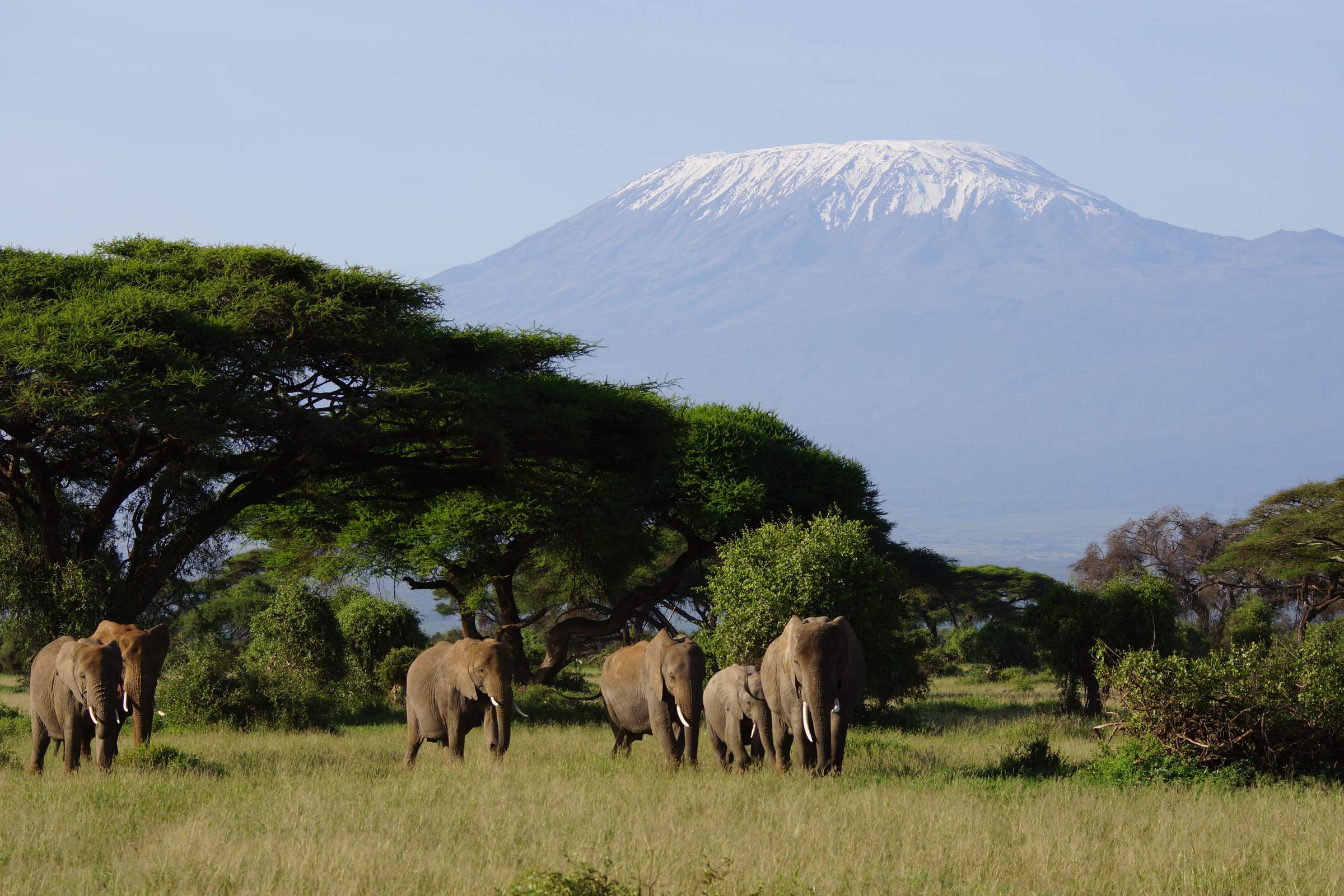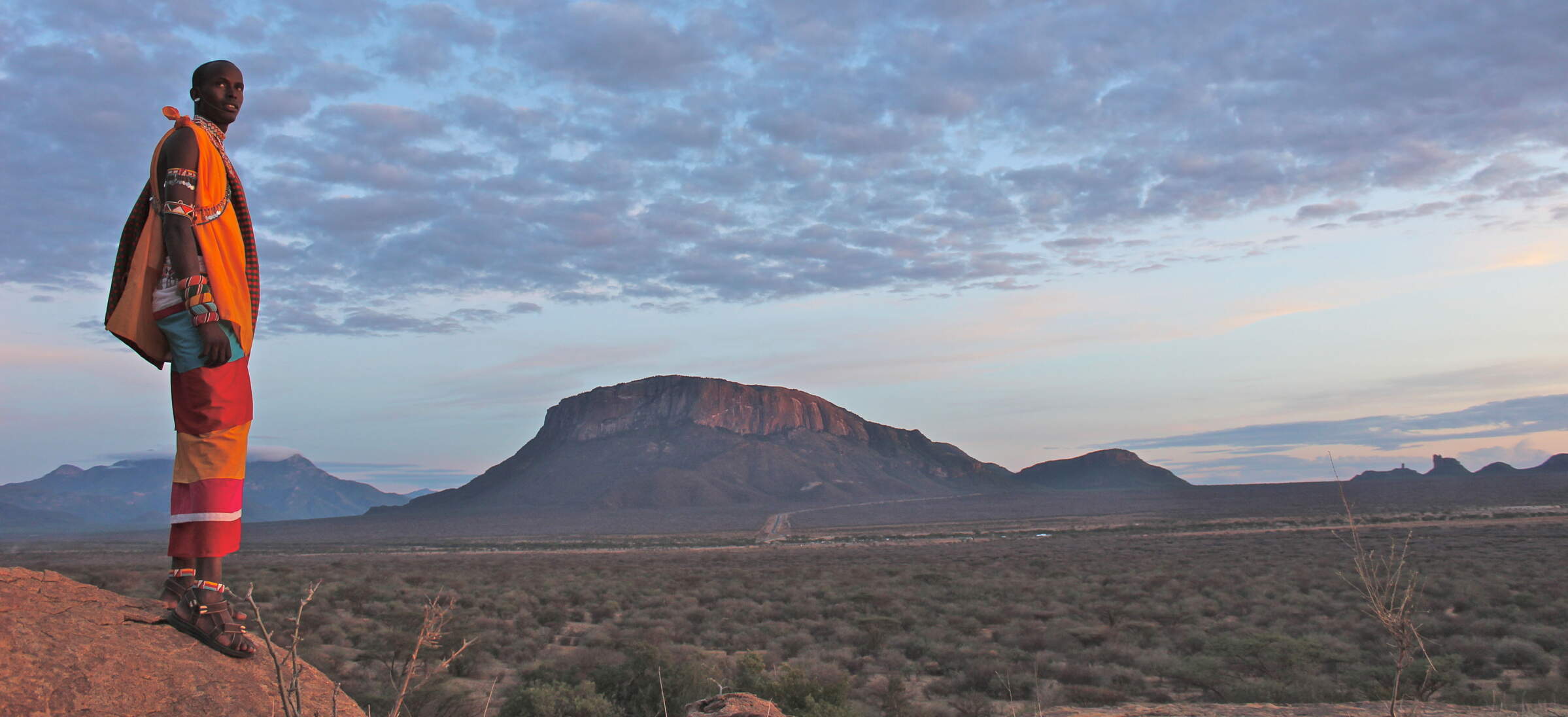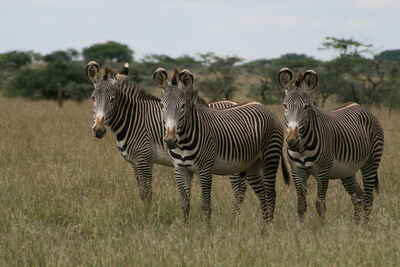
Spotting radar-eared, fine-striped Grevy’s zebras...
...or wild dogs is almost a certainty.
Experienced riders can also do game-watching rides...
Laikipia
Laikipia
You won’t need to escape from the crowds here. Almost the size of Wales, Laikipia has plenty of room for a few safari visitors.
To the north-east of the Great Rift Valley, and north-west of snow-capped Mount Kenya, the high plains of Laikipia are increasingly recognised as one of Kenya’s best safari regions, challenging the Maasai Mara for overall safari experience, if not for raw numbers of animals.
Between Mount Kenya and the northern deserts, these high rangelands spread out between north-flowing streams and rivers, which flow most of the year into the Ewaso Nyiro, northern Kenya’s greatest river.
Formerly a patchwork of huge ranches, and still an important livestock district, Laikipia is now where some of Kenya’s most encouraging conservation success stories are unfolding. The environment here is managed to protect the wildlife, to promote a personal and small-scale approach to adventurous and often luxurious safari tourism, and to generate an income for the local Samburu, Ilaikipiak Maasai, and Mokogodo Maasai communities.

Safaris visiting Laikipia
Just ideas, we'll always tailor-make a trip for you

Hamerkop Fly-In Safari
8 days • 2 locations
NAIROBI AIRPORT TO NAIROBI AIRPORT
Different wildlife, contrasting camps and a whole host of activities, this is a safari for those wanting to get out and about and not just sit in a vehicle.
US$7,430 - US$10,960 per person

Big Cat Fly-in Safari
8 days • 2 locations
NAIROBI AIRPORT TO NAIROBI AIRPORT
Combining two of Kenya’s best wildlife-viewing areas, this slow-paced safari to the Lewa Conservancy and Maasai Mara guarantees iconic wildlife. The long-established, well-rated camps are great value, too.
US$5,690 - US$8,850 per person

Golden Jackal Fly-in Safari
8 days • 2 locations
NAIROBI AIRPORT TO NAIROBI AIRPORT
A contrasting safari of a lodge and a tented camp, with action-packed activities in Laikipia and wildlife-filled game drives in the Maasai Mara, offers a consistently high-quality experience.
US$11,200 - US$14,130 per person

Purple Grenadier Fly-In Safari
6 days • 2 locations
NAIROBI AIRPORT TO NAIROBI AIRPORT
Fantastic guiding from intimate, well-run mid-range tented camps, in superb conservancy locations: this safari is all about making the most of the incredible wildlife in Laikipia and the Maasai Mara.
US$6,390 - US$8,800 per person

African Finfoot Fly-in Safari
7 days • 3 locations
NAIROBI AIRPORT TO NAIROBI AIRPORT
After a unique start in Nairobi National Park, classic, luxurious camps combine for a high-end and exclusive safari in fantastic wildlife destinations.
US$11,230 - US$17,340 per person

African Hawk-Eagle Fly-in Safari
7 days • 2 locations
NAIROBI AIRPORT TO NAIROBI AIRPORT
Two luxurious camps provide relatively quiet game-viewing within Laikipia and the Mara ecosystem. Situated on private conservancies, both Lewa Wilderness and Naboisho offer the chance to sight all of the "Big 5" and to enjoy a range of safari activities.
US$9,360 - US$16,430 per person

Greater Kudu Fly-In Safari
7 days • 2 locations
NAIROBI AIRPORT TO NAIROBI AIRPORT
Experience a truly authentic bush experience on this safari at two classic tented camps, in Laikipia and the Maasai Mara. These are some of the best places to spot wild dogs and big cats.
US$8,130 - US$9,080 per person

Rothschild Giraffe Safari
8 days • 3 locations
NAIROBI AIRPORT TO NAIROBI AIRPORT
A example of a luxury Kenyan safari, starting at the iconic Giraffe Manor before fabulous stays on the spectacular Solio Reserve and Sala’s Camp in a remote corner of the Maasai Mara.
US$12,650 - US$17,830 per person
Most recent reviews of our safaris to Laikipia
Click below to browse all 244 reviews from Laikipia. All from our travellers; all are in full & unedited.
Arrived 18 Feb 2025, 9 nights
"My Feb 2025 trip"
Overall rating: Excellent
Arrived 6 Feb 2025, 5 nights
"My Feb 2025 trip"
Overall rating: Excellent
Arrived 28 Jan 2025, 11 nights
"My Jan 2025 trip: Something undoubtedly to be repeated."
Overall rating: Excellent
Arrived 27 Jan 2025, 11 nights
"My Jan 2025 trip"
Overall rating: Excellent
Arrived 25 Jan 2025, 24 nights
"My Jan 2025 trip"
Overall rating: Excellent
Arrived 21 Jan 2025, 16 nights
"Jan 2025 mountain gorilla trek and safari"
Overall rating: Excellent
Arrived 15 Jan 2025, 12 nights
"My Jan 2025 trip"
Overall rating: Excellent
Arrived 12 Jan 2025, 25 nights
"My Jan 2025 trip"
Overall rating: Excellent
Arrived 12 Jan 2025, 25 nights
"My Jan 2025 trip"
Overall rating: Excellent
Arrived 12 Jan 2025, 25 nights
"My Jan 2025 trip"
Overall rating: Excellent
Where to stay in Laikipia
Our suggestions for safari camps in Laikipia
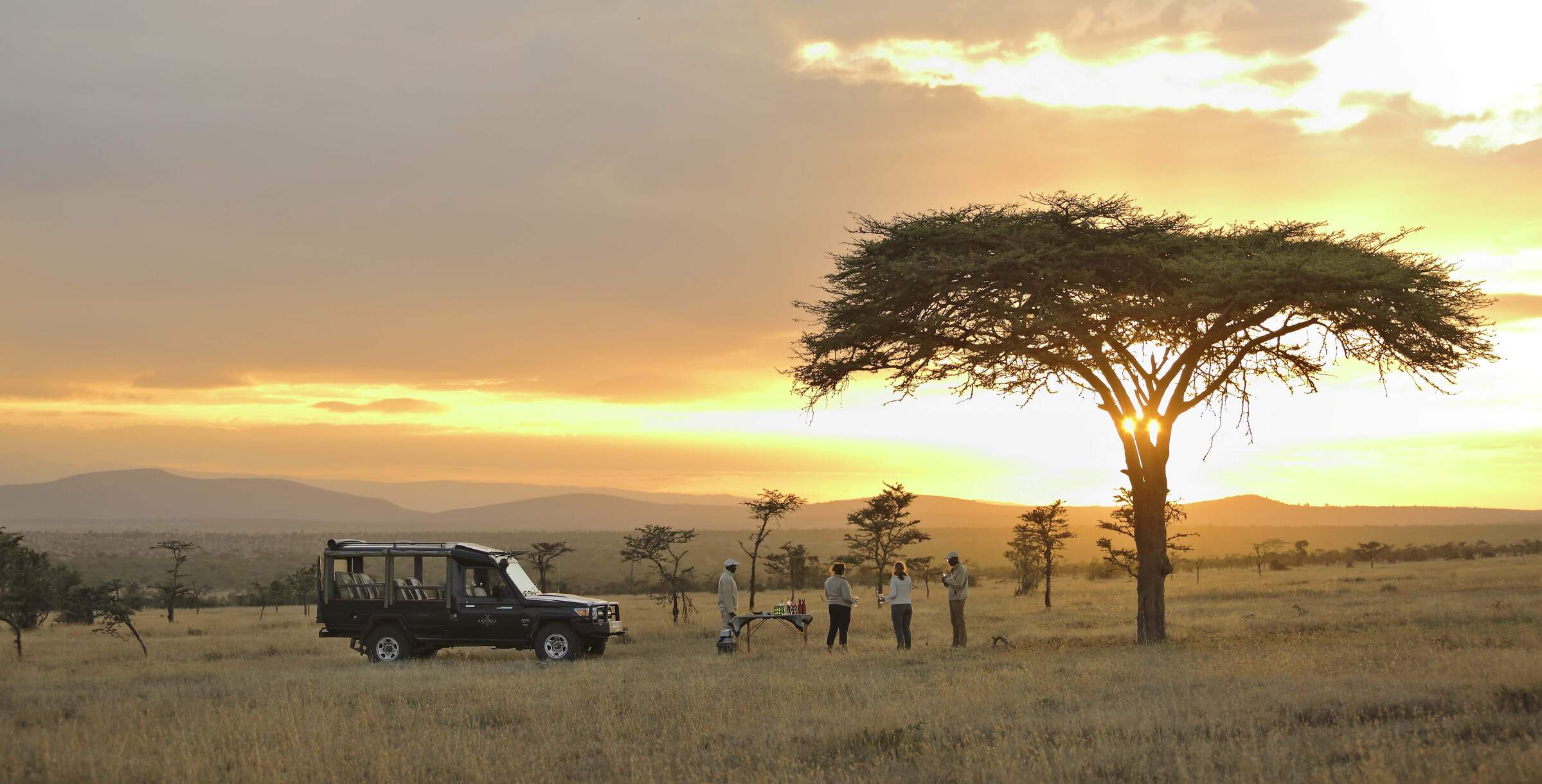
Kicheche Laikipia
Kicheche Laikipia is the most luxurious tented camp of the handful of places to stay in the Ol Pejeta Conservancy in central Laikipia.
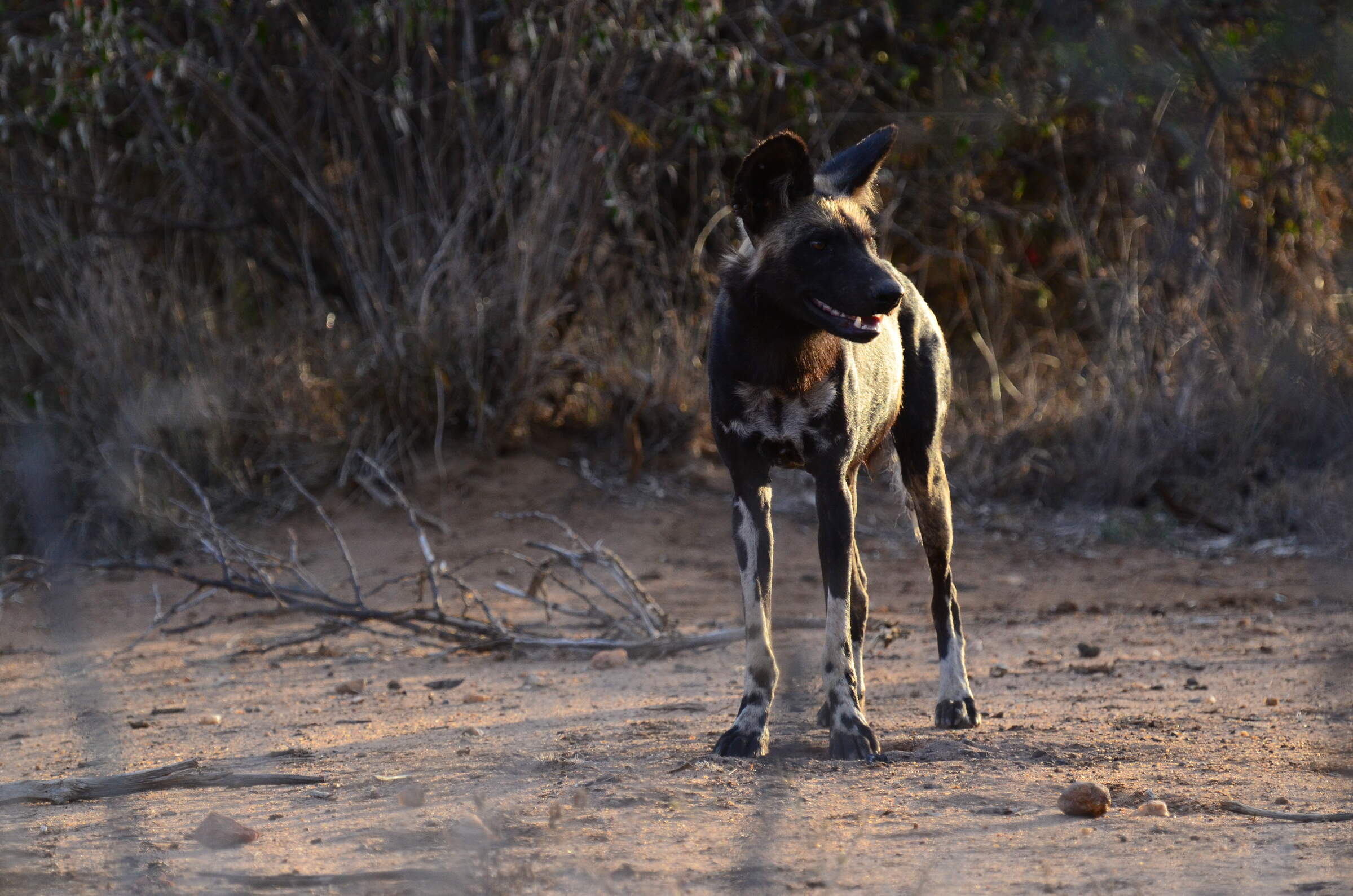
Laikipia Wilderness
Laikipia Wilderness is a rustic owner-managed bush camp, in excellent wild dog territory, offering outstanding guiding.
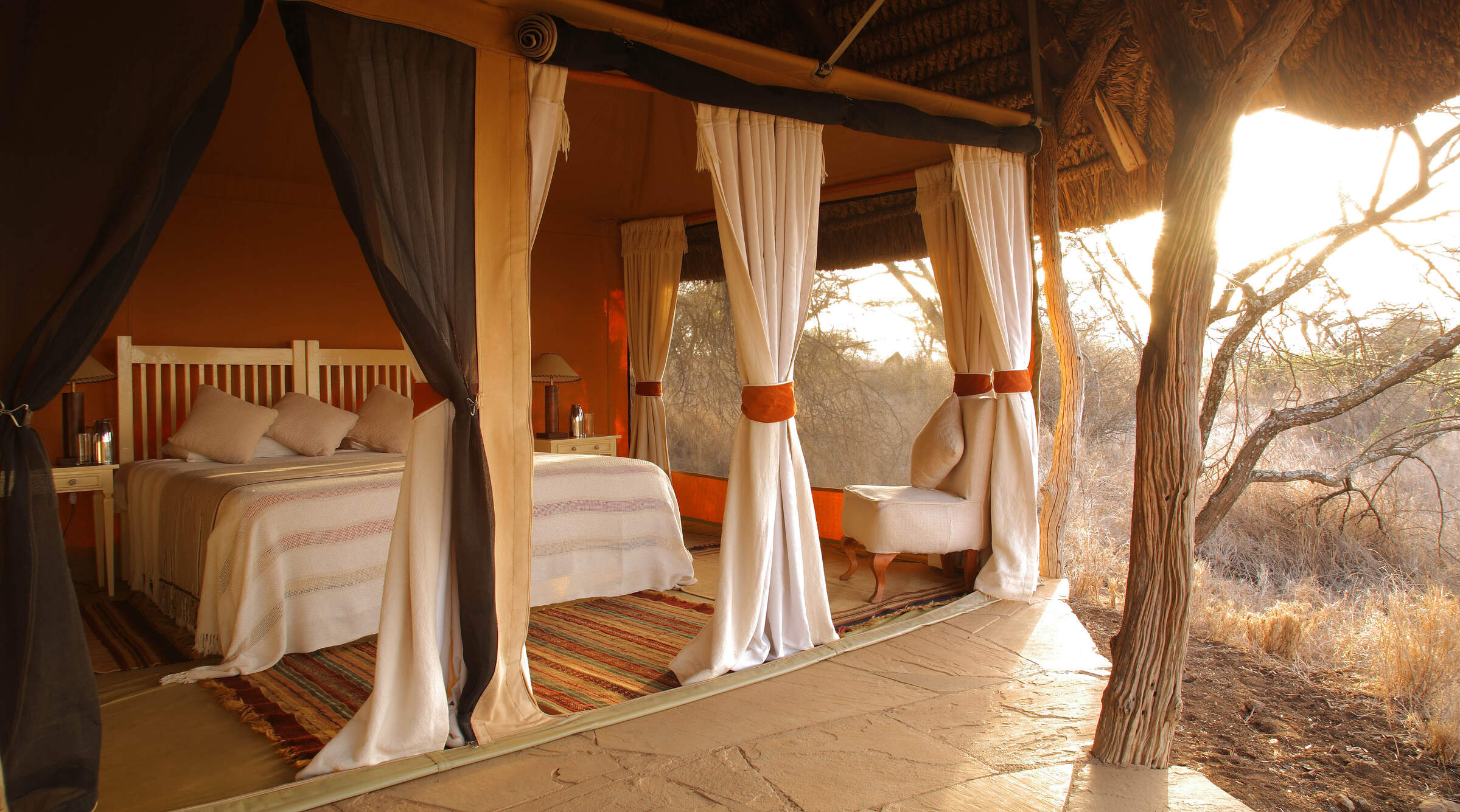
Lewa Safari Camp
Lewa Safari Camp is a comfortable and homely tented lodge, located in the Lewa Conservancy and offering a relatively exclusive safari away from mass tourism.
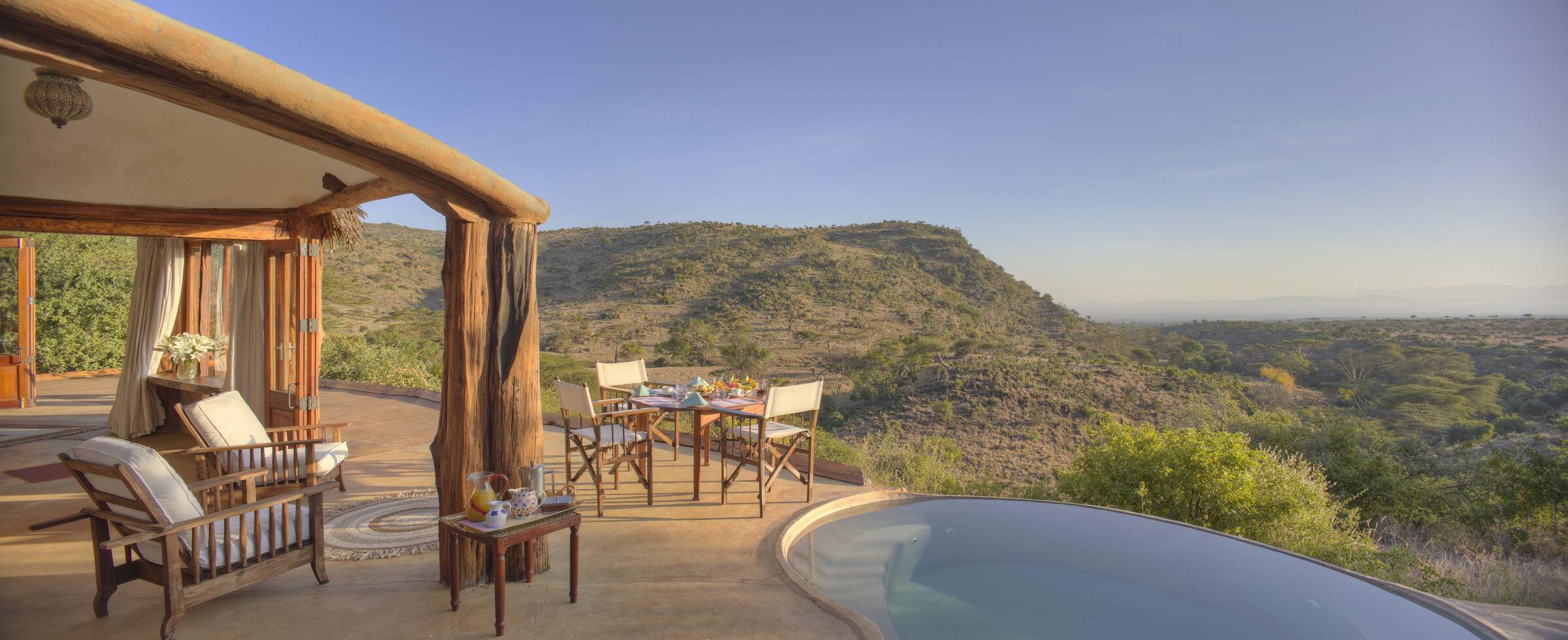
Lewa Wilderness
Lewa Wilderness is a comfortable, fenced safari lodge with nine cottages, great views and a huge range of activities.
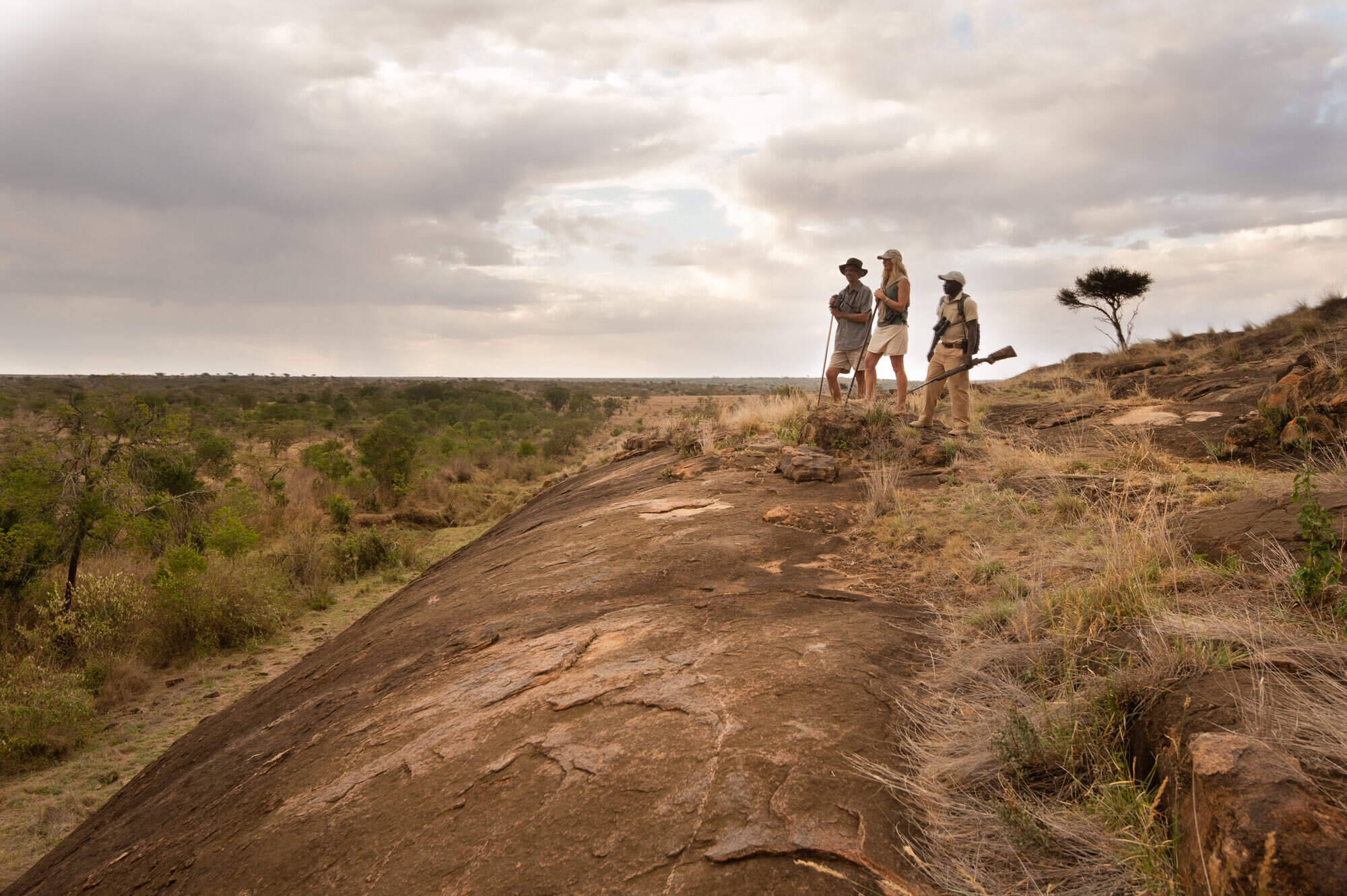
El Karama Lodge
El Karama is a comfortably rustic, very personal, riverside eco-lodge on a game-rich private ranch in Laikipia, an hour’s drive north of Nanyuki airport.
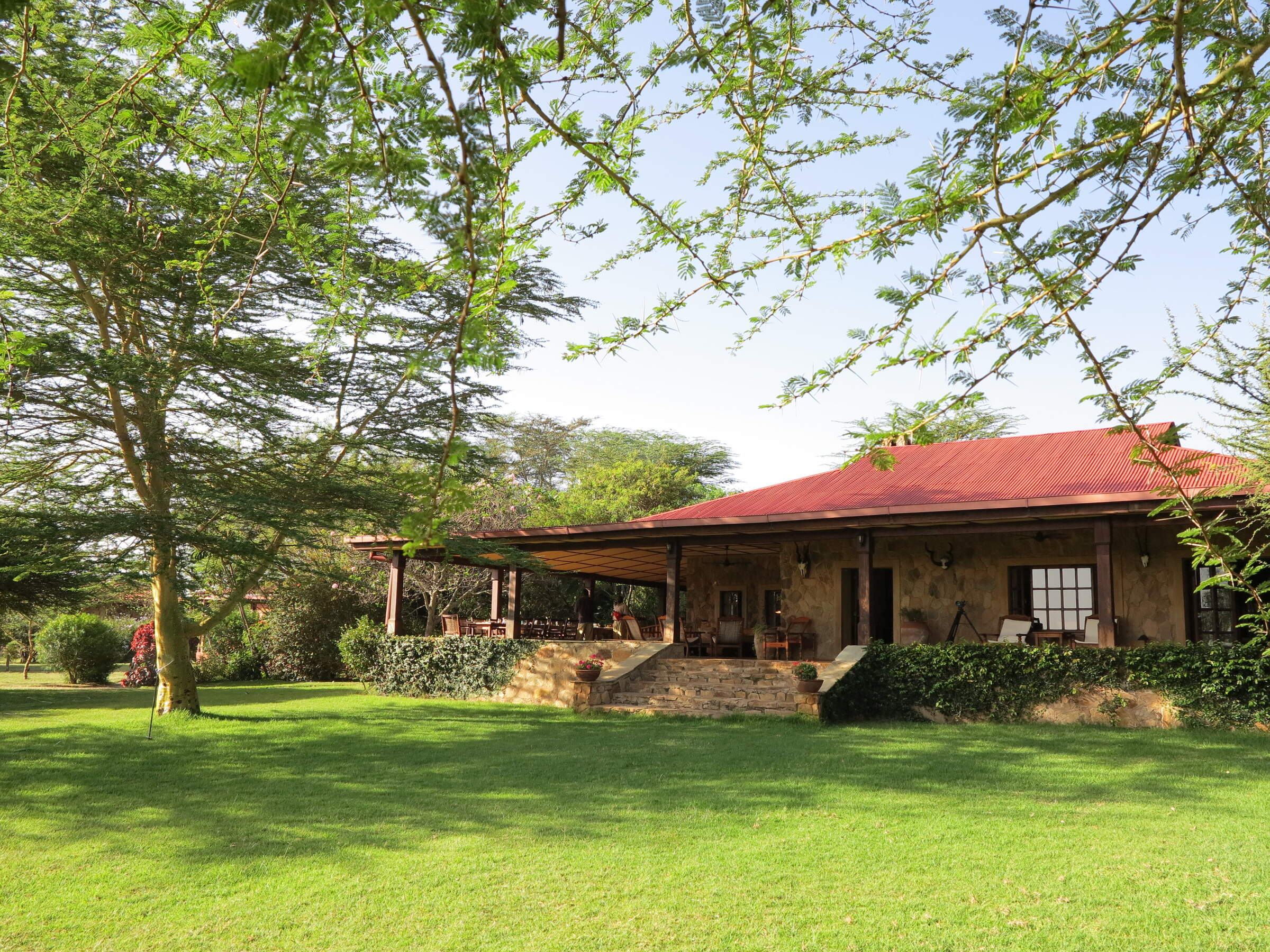
Sosian
Sosian Lodge is a distinctive, estancia-style ranch house on a former cattle ranch, with great opportunities for riding, relaxing and seeing wild dogs and other savannah wildlife.
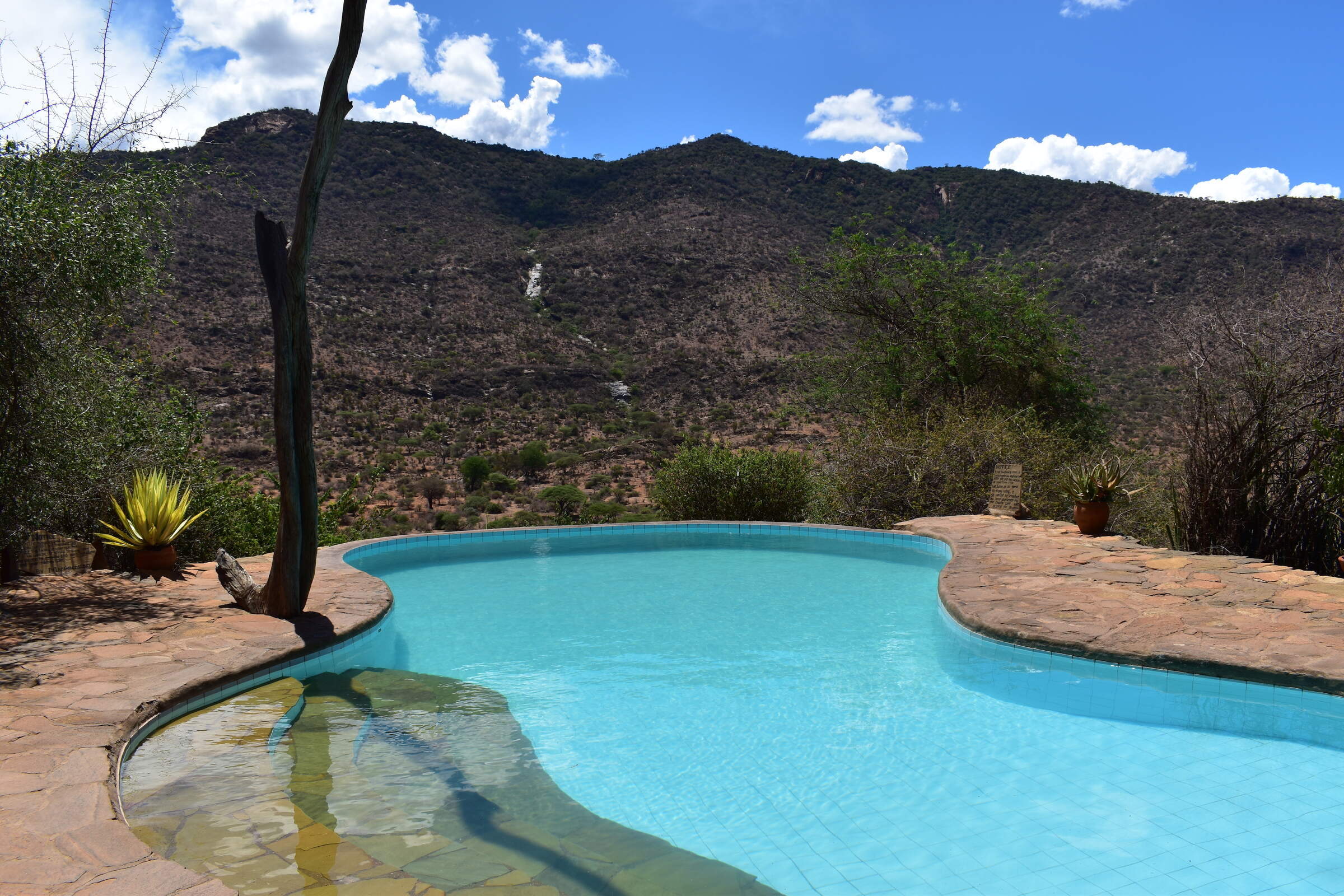
Il Ngwesi Eco-Lodge
The community-owned Il Ngwesi Eco-Lodge sits atop a small hill in the remote Il Ngwesi Group Ranch, a two-hour drive north of Lewa Conservancy in north-eastern Laikipia.
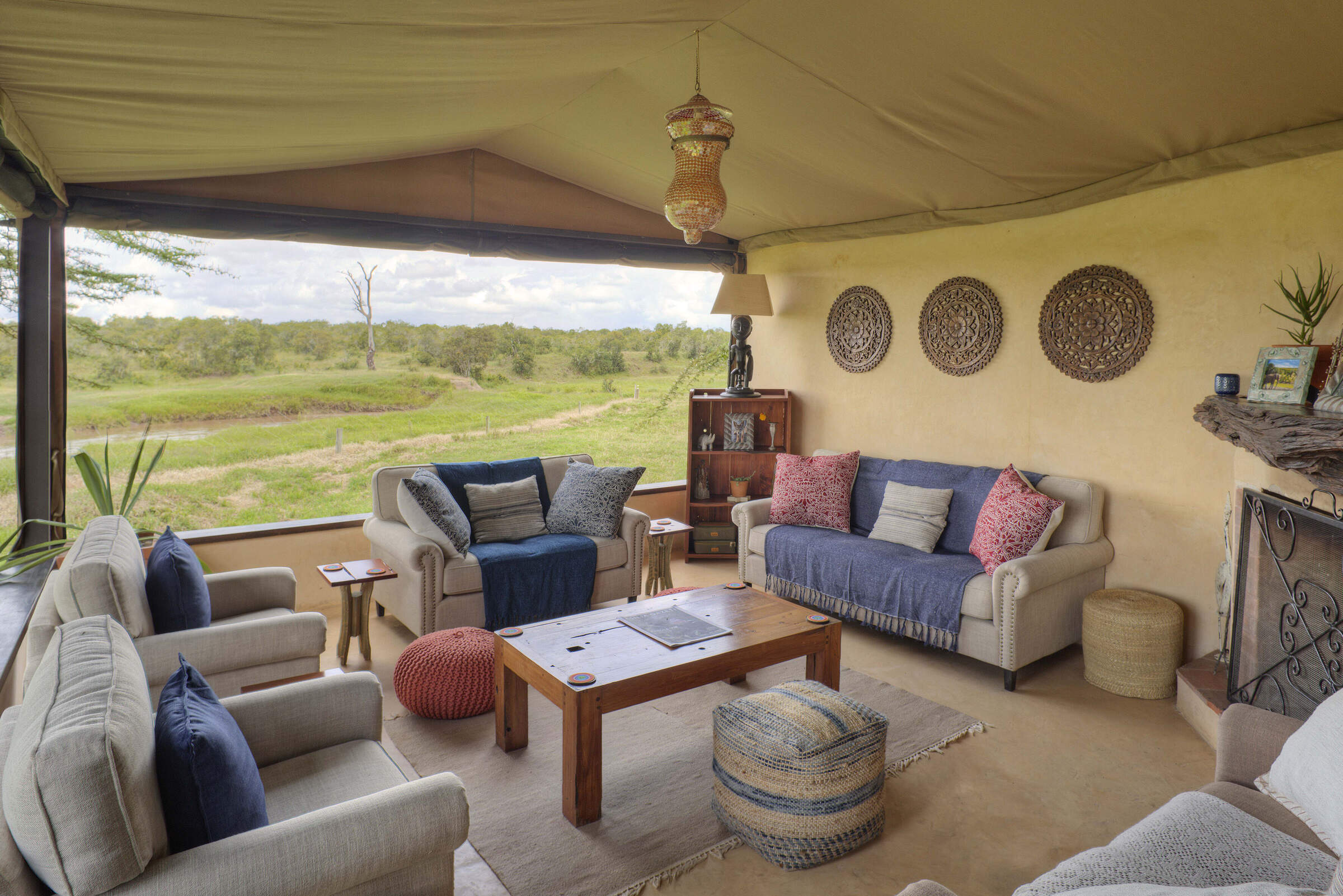
Ol Pejeta Bush Camp
Ol Pejeta Bush Camp is a simple camp, with comfortable tents, delivering an authentic wilderness experience backed up by good food and guiding.
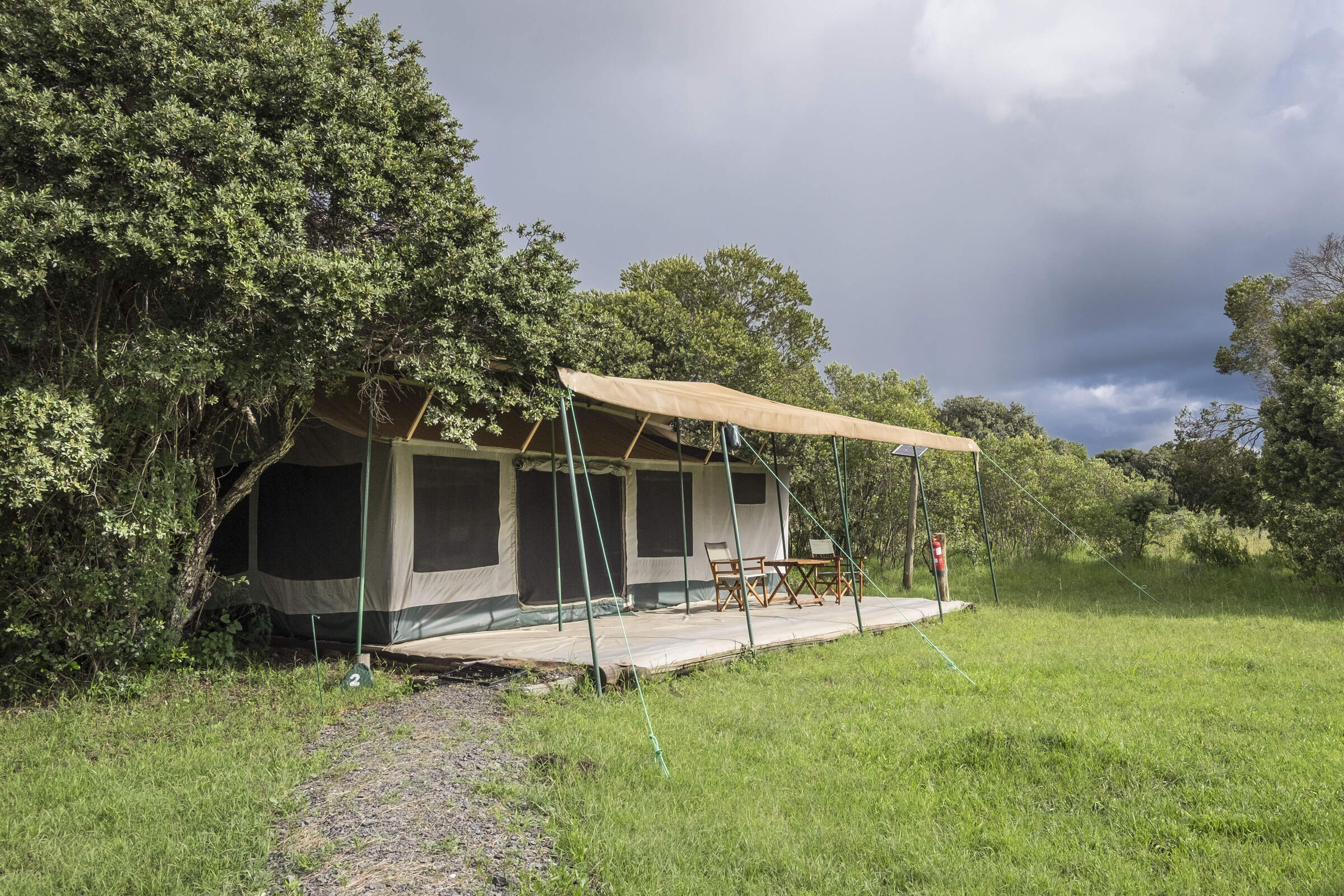
Porini Rhino Camp
Porini Rhino Camp is a small, simple, well established tented camp, with a keen focus on sustainable and low-impact tourism.
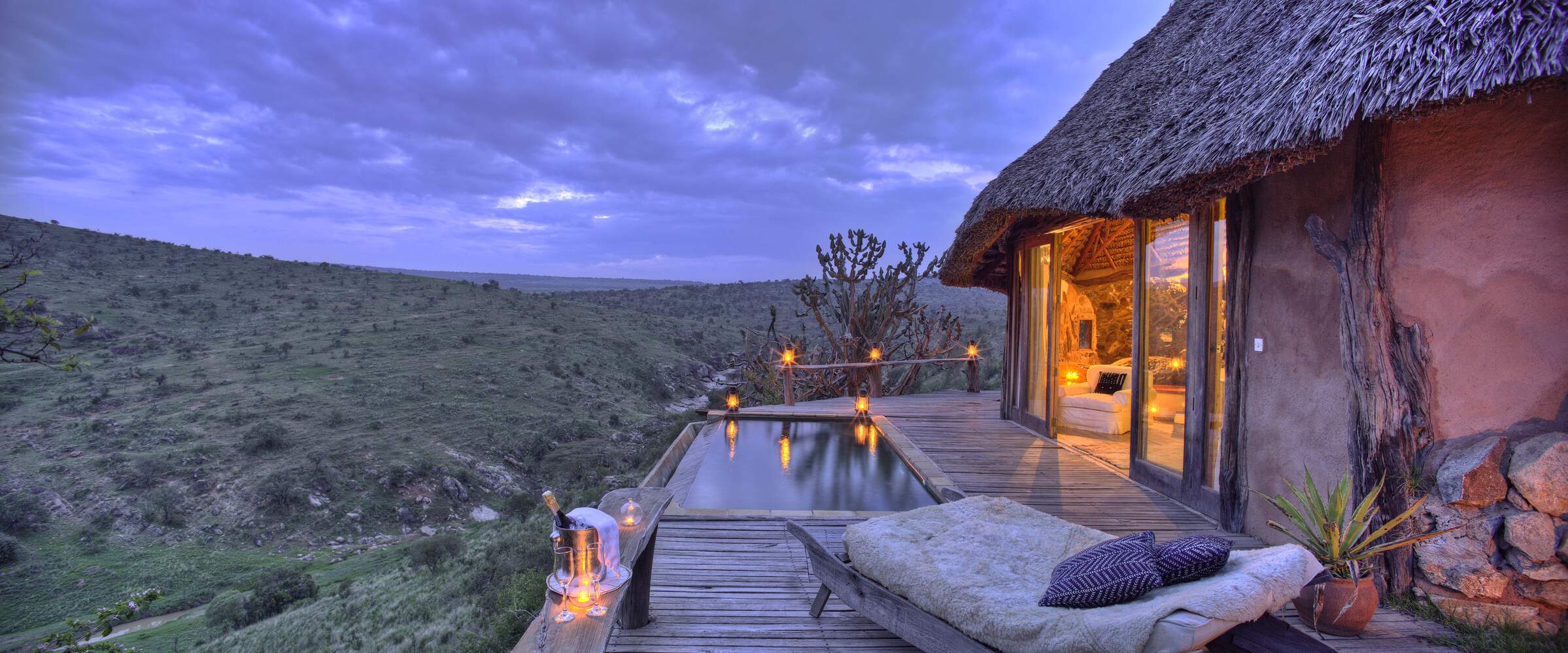
Borana
Borana is a comfortable and striking lodge on the Borana Conservancy in eastern Laikipia, offering pleasant accommodation with good food and service and a very wide range of activities.

Sirikoi
Sirikoi is a small, very high-quality safari camp with excellent service and food and a wide selection of activities.
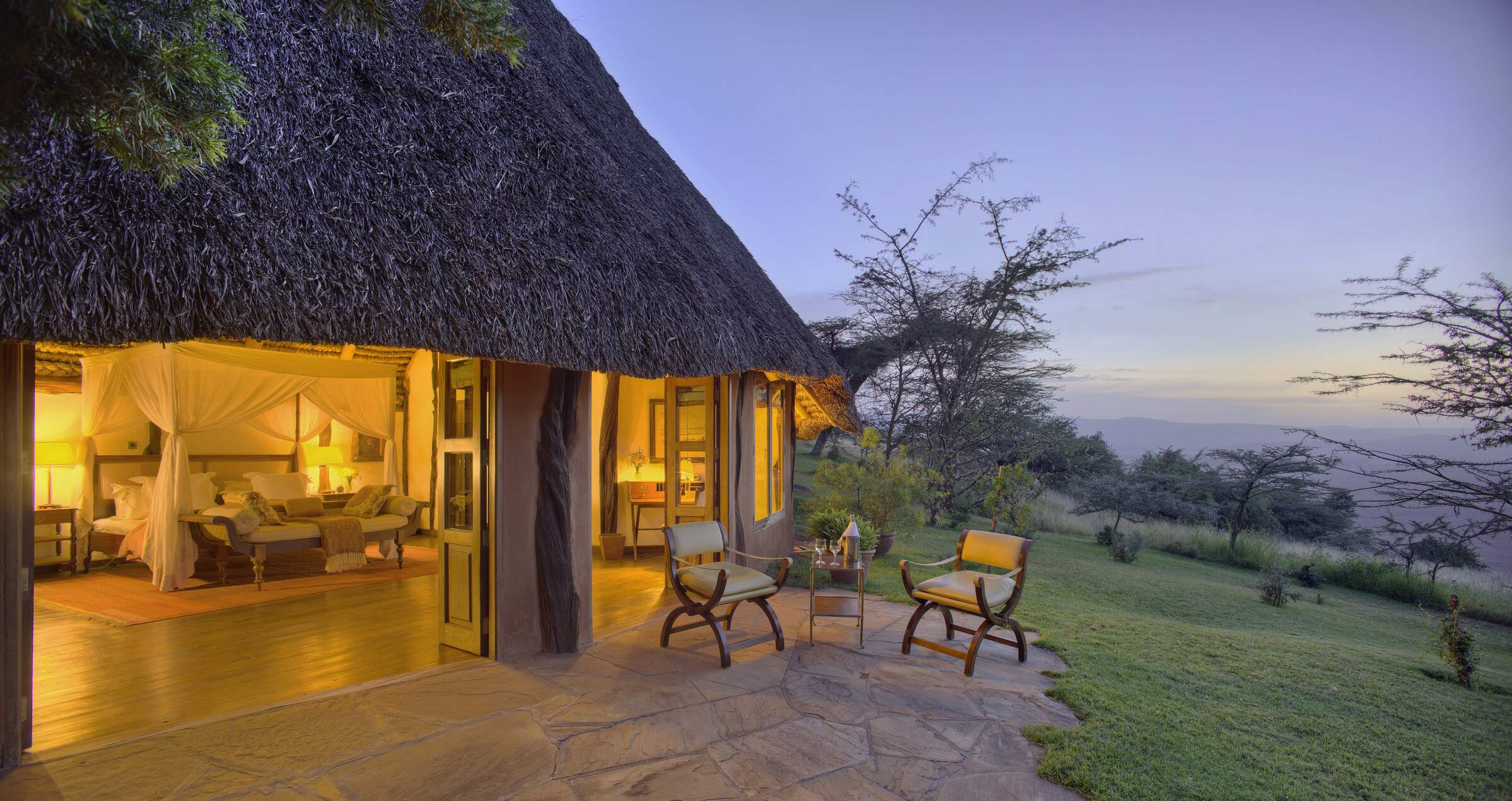
Kifaru House
Kifaru House is a small, stylish safari lodge in the Lewa Conservancy, with beautiful views across the landscape.
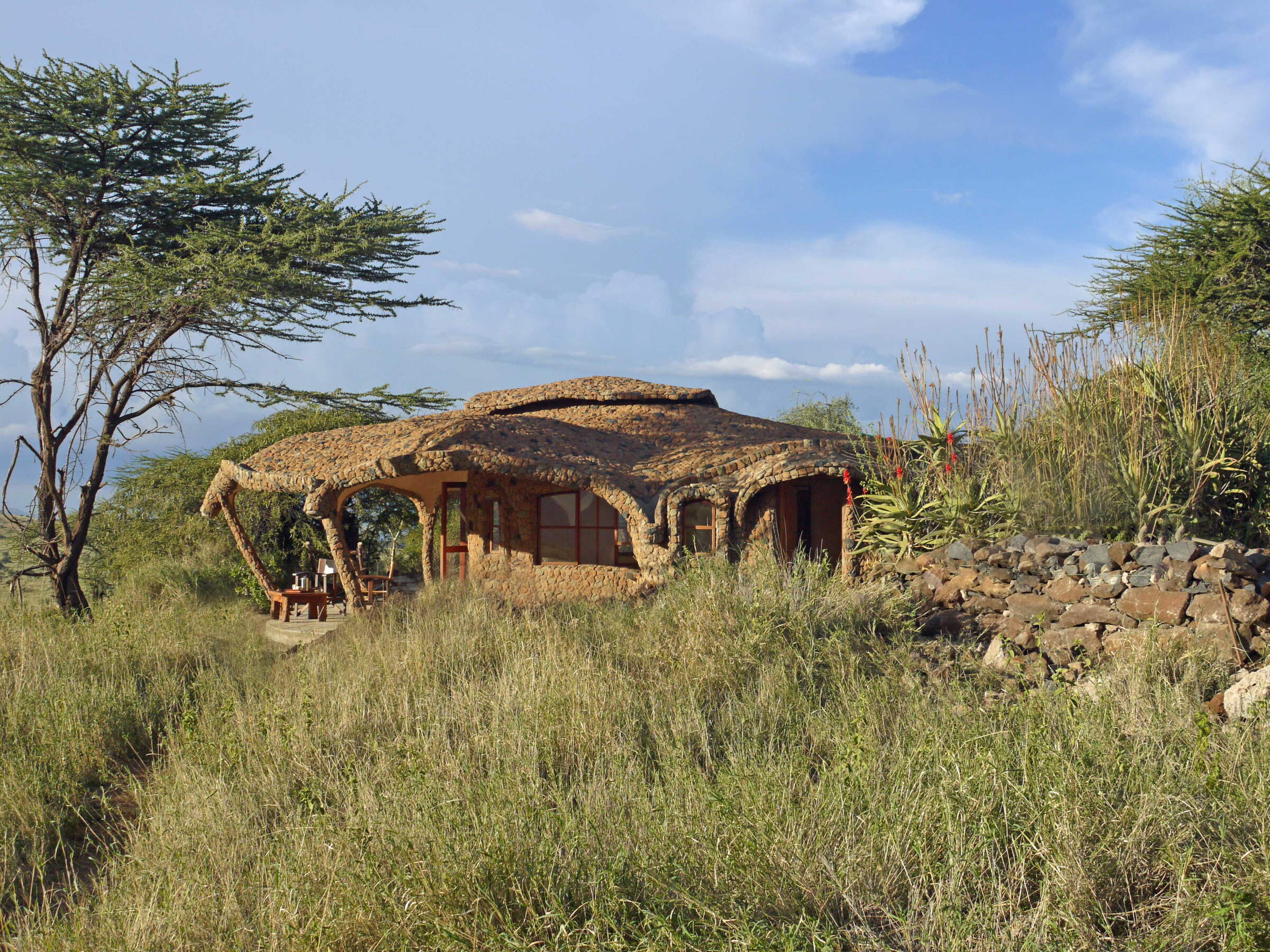
Lewa House
Lewa House is a very comfortable, boutique safari lodge located on the Lewa Conservancy, north of Mount Kenya.

Solio Lodge
Solio Lodge is an exclusive and luxurious bush lodge set in the private Solio Game Ranch in southern Laikipia.
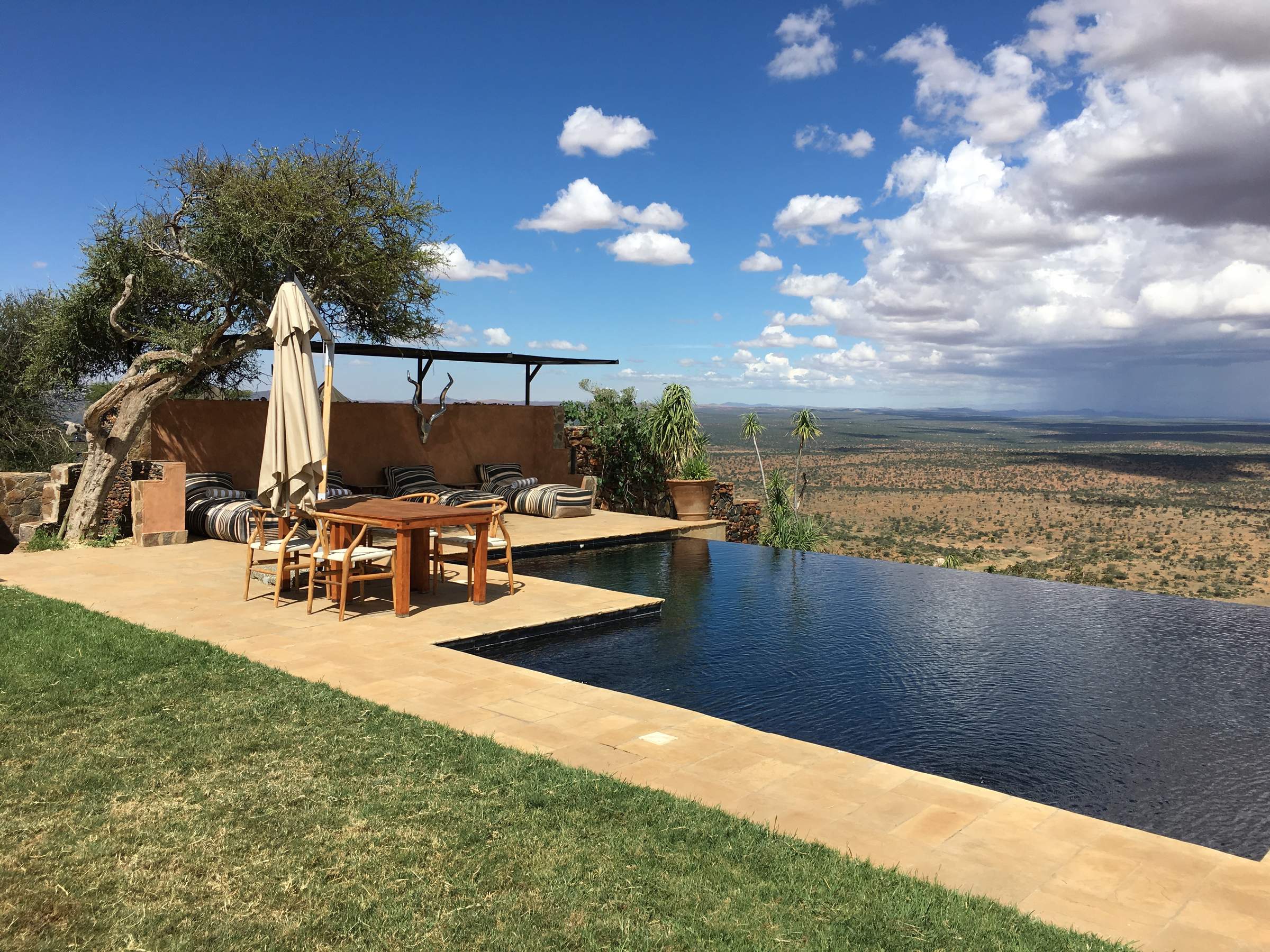
Loisaba Tented Camp
Loisaba Tented Camp is a luxury safari base of tented rooms, ranged along a ridge in the Loisaba Conservancy, facing Mount Kenya. The camp was completely rebuilt in 2016.
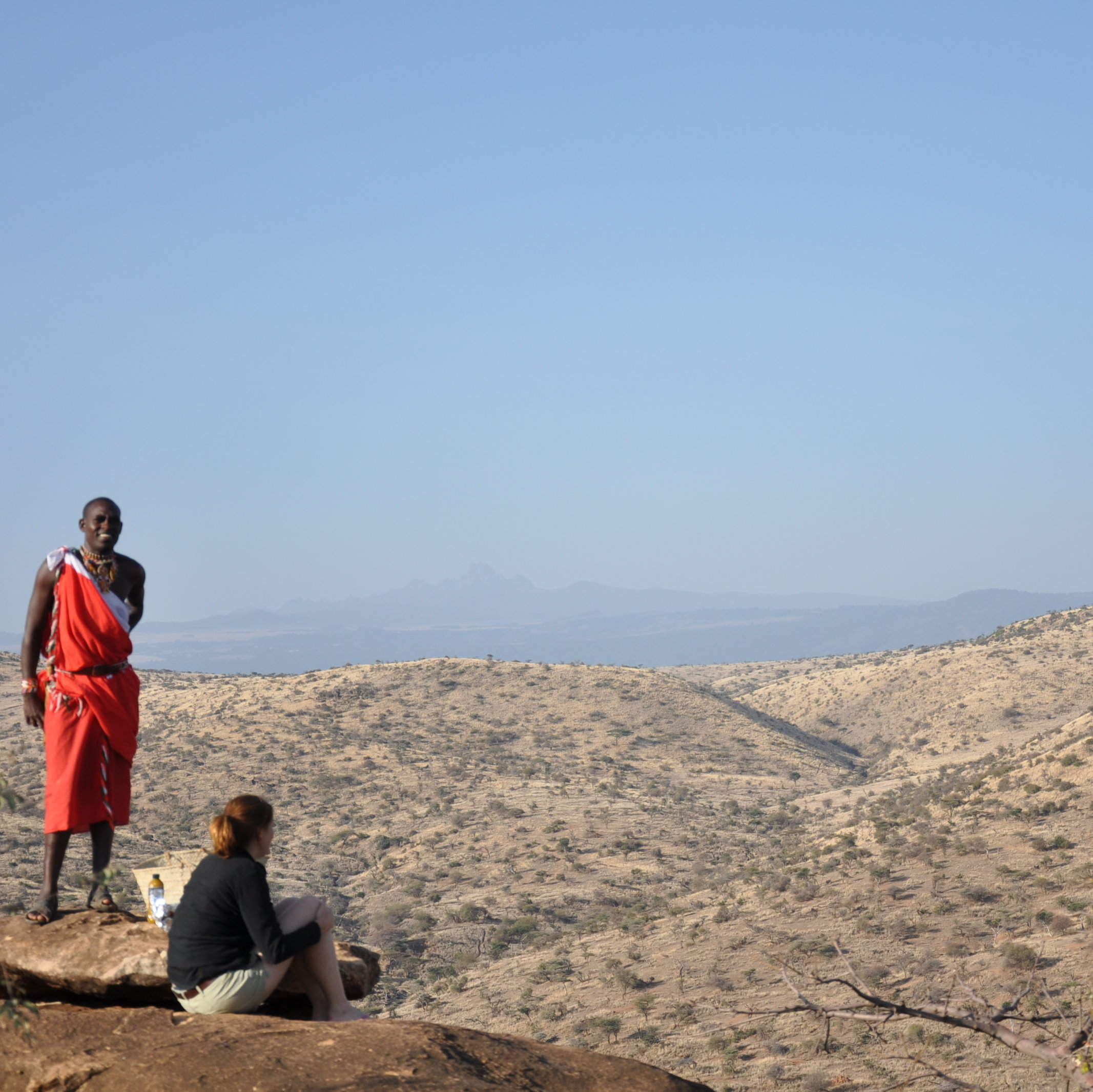
Tassia Lodge
Tassia offers a unique wilderness experience in a remote location: come here for cultural interaction, stunning views and something a bit different.
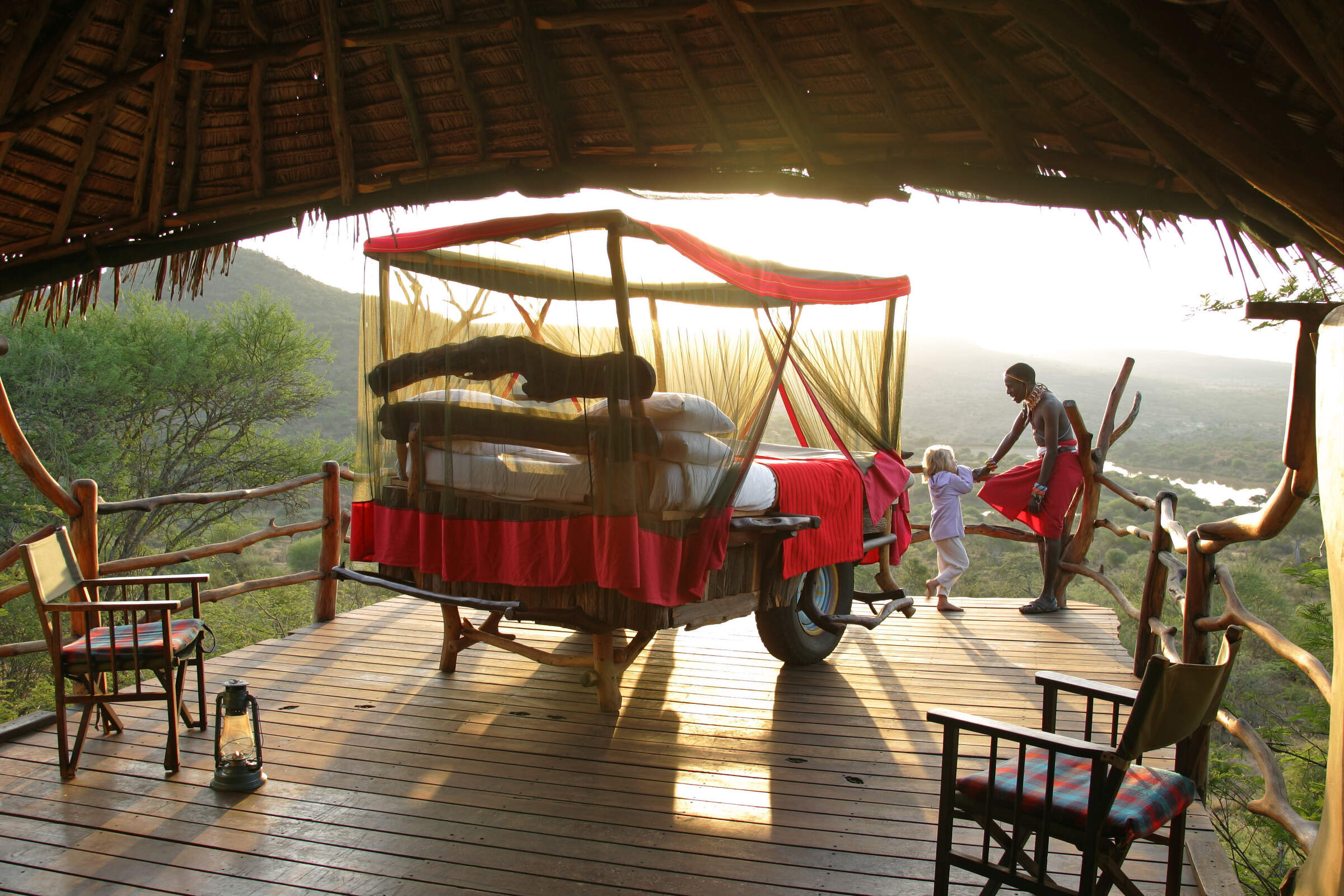
Loisaba Star Beds
Loisaba Starbeds is a simple camp of 4 rooms with pull-out, open-air 'star beds', located near a dam in the Loisaba Conservancy, in northwestern Laikipia.
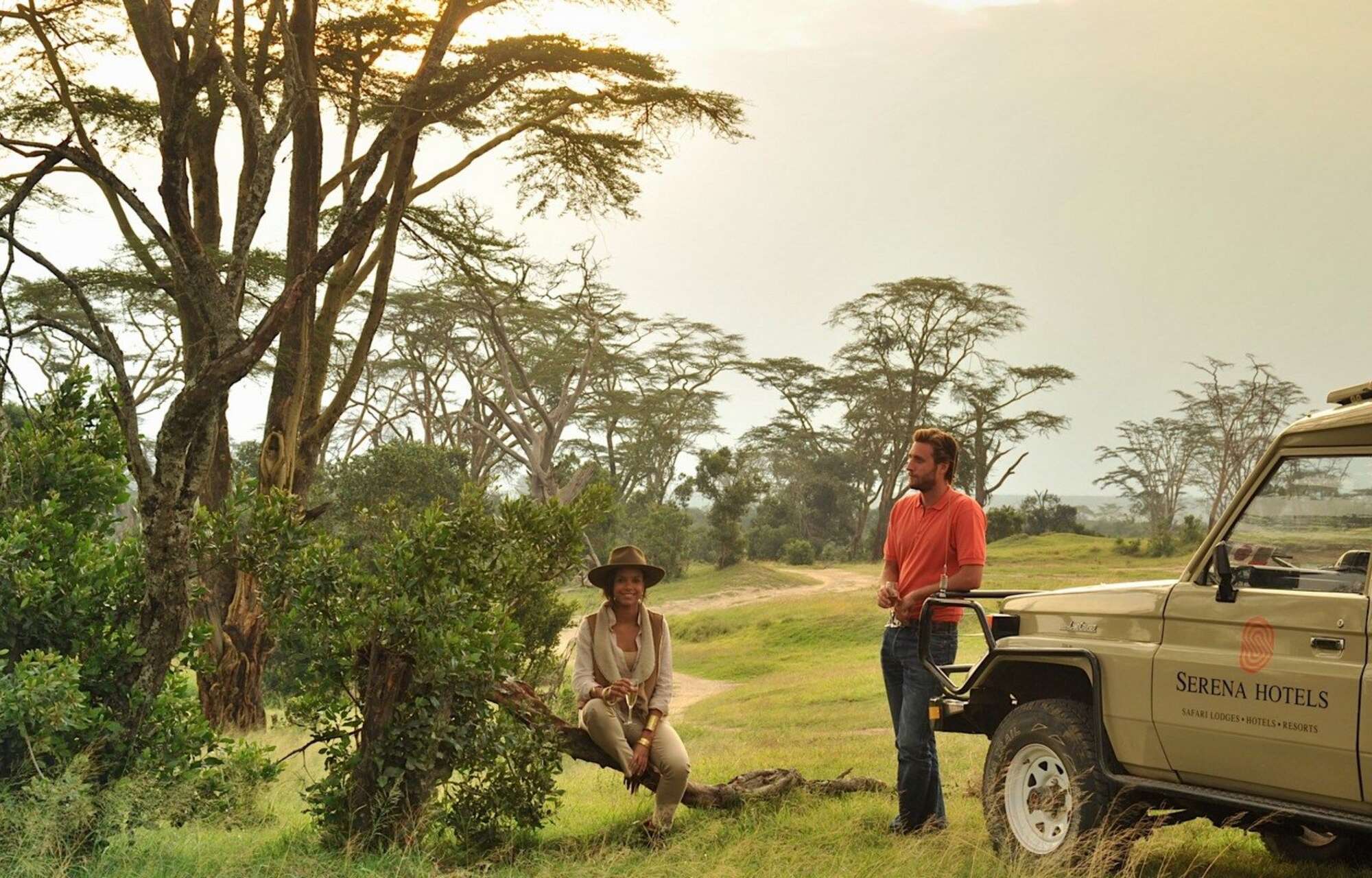
Sweetwaters Serena
Sweetwaters Serena is a large, older tented camp – the largest camp in the Laikipia region – in the eastern part of the Ol Pejeta Conservancy.
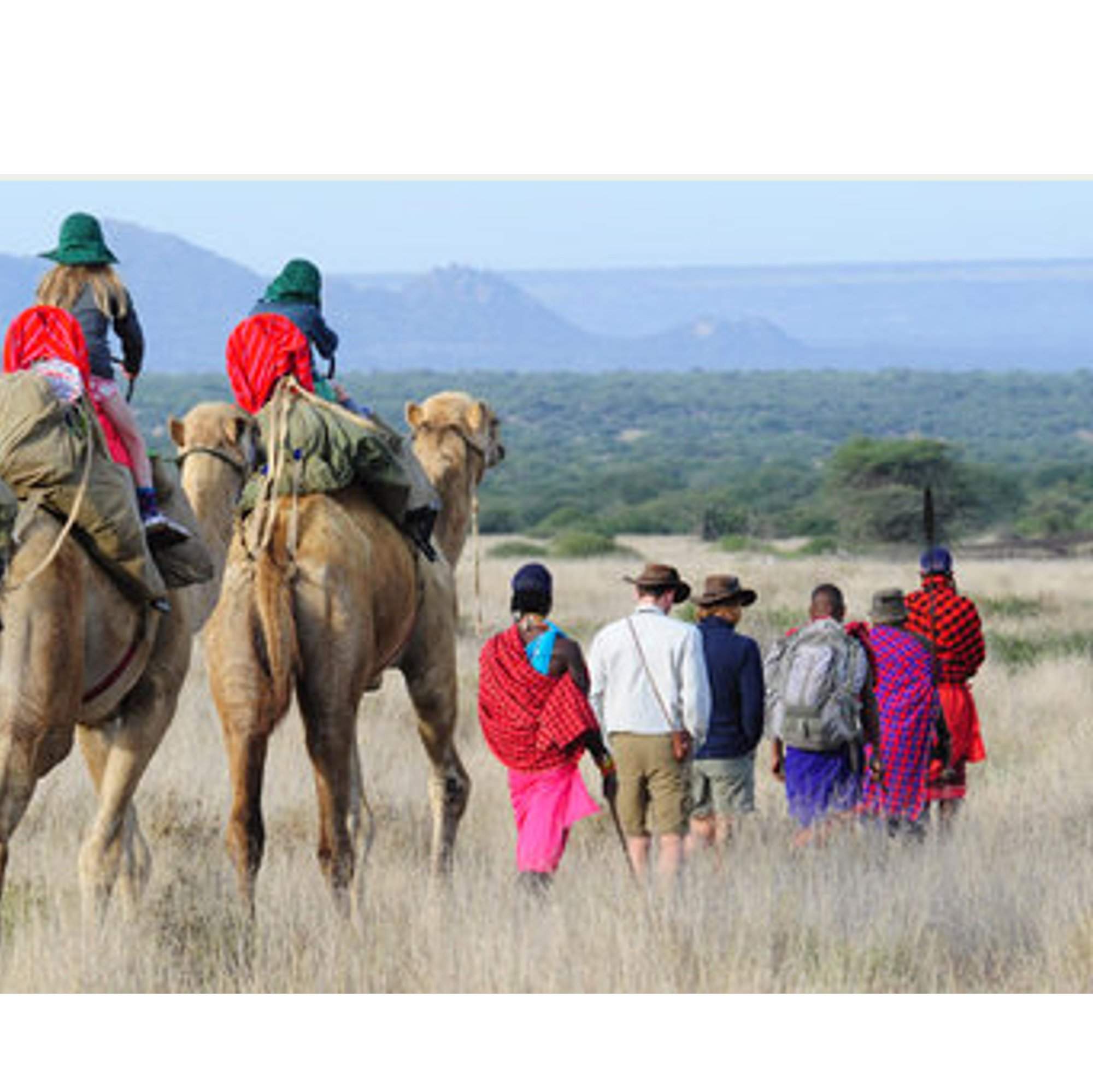
Karisia Walking Safaris
Karisia Walking Safaris operates camel assisted, multi-day walking safaris from its main camp, Tumaren, set in a remote part of Laikipia.
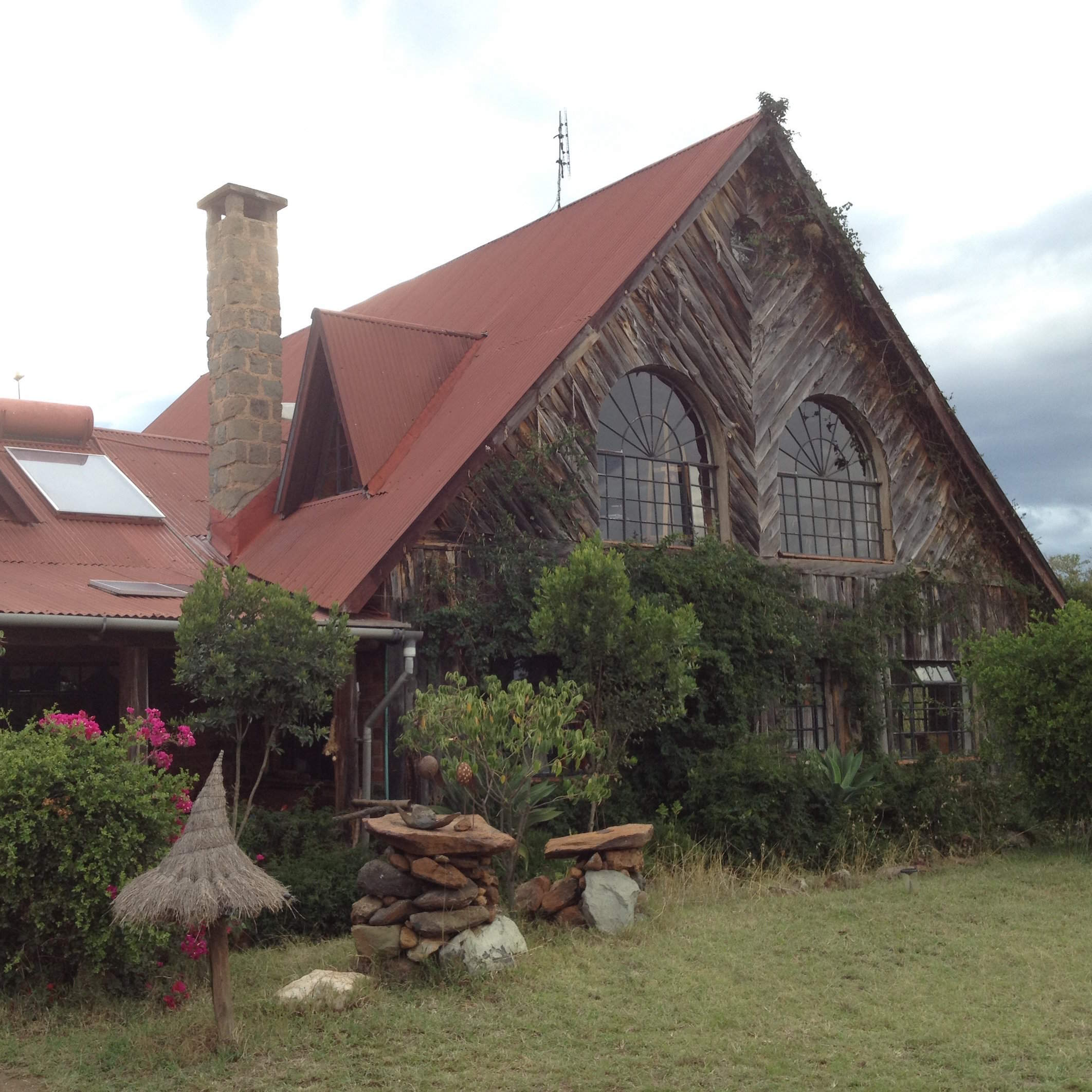
Sandai
Sandai is a pretty, owner-run homestay, set between the Aberdare Range and Mount Kenya, offering a range of activities at extra cost.
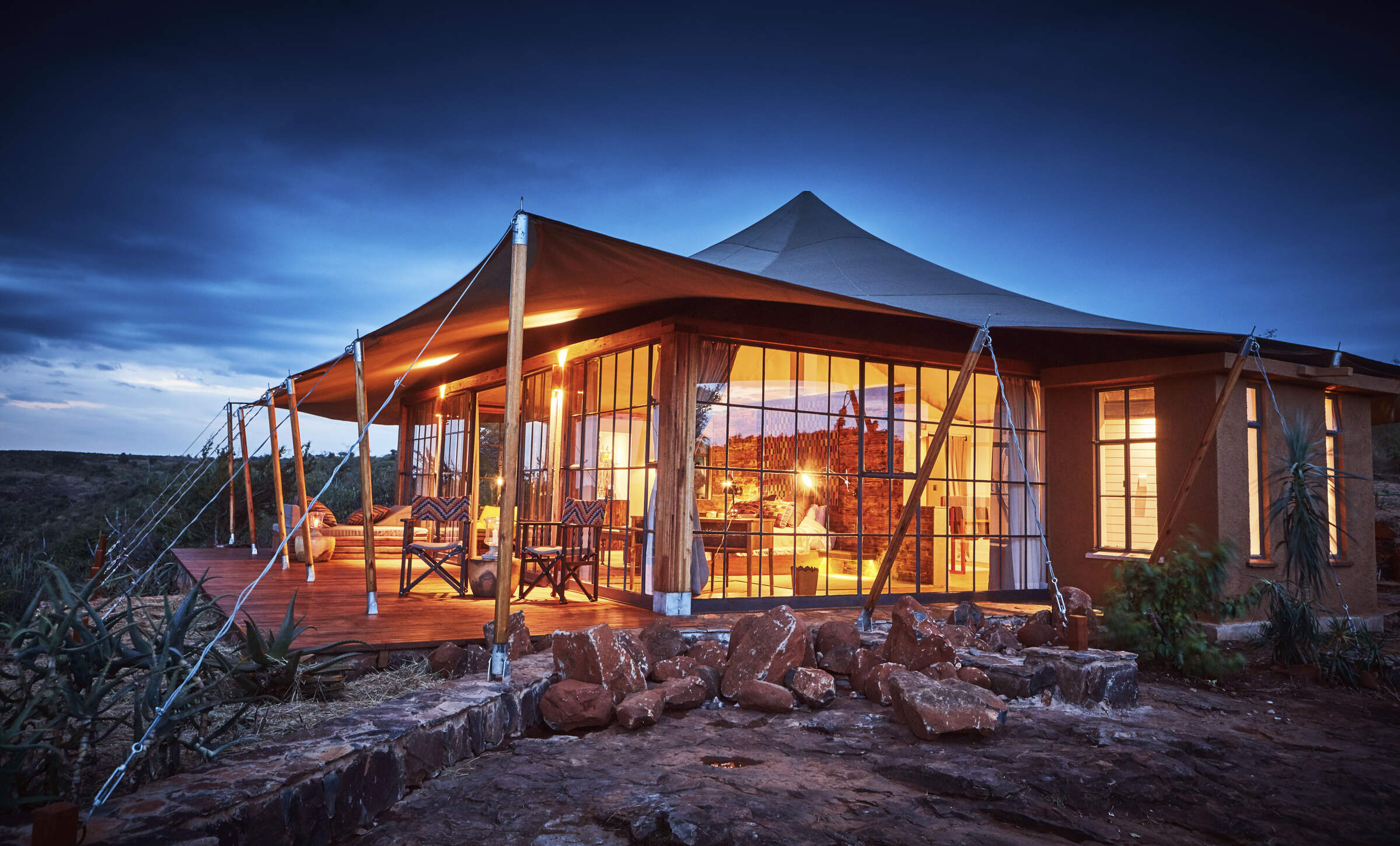
Lodo Springs
Lodo Springs is a spectacularly located luxury lodge in a remote spot in the Loisaba Conservancy, sister lodge to Loisaba Tented Camp and Loisaba Star Beds.
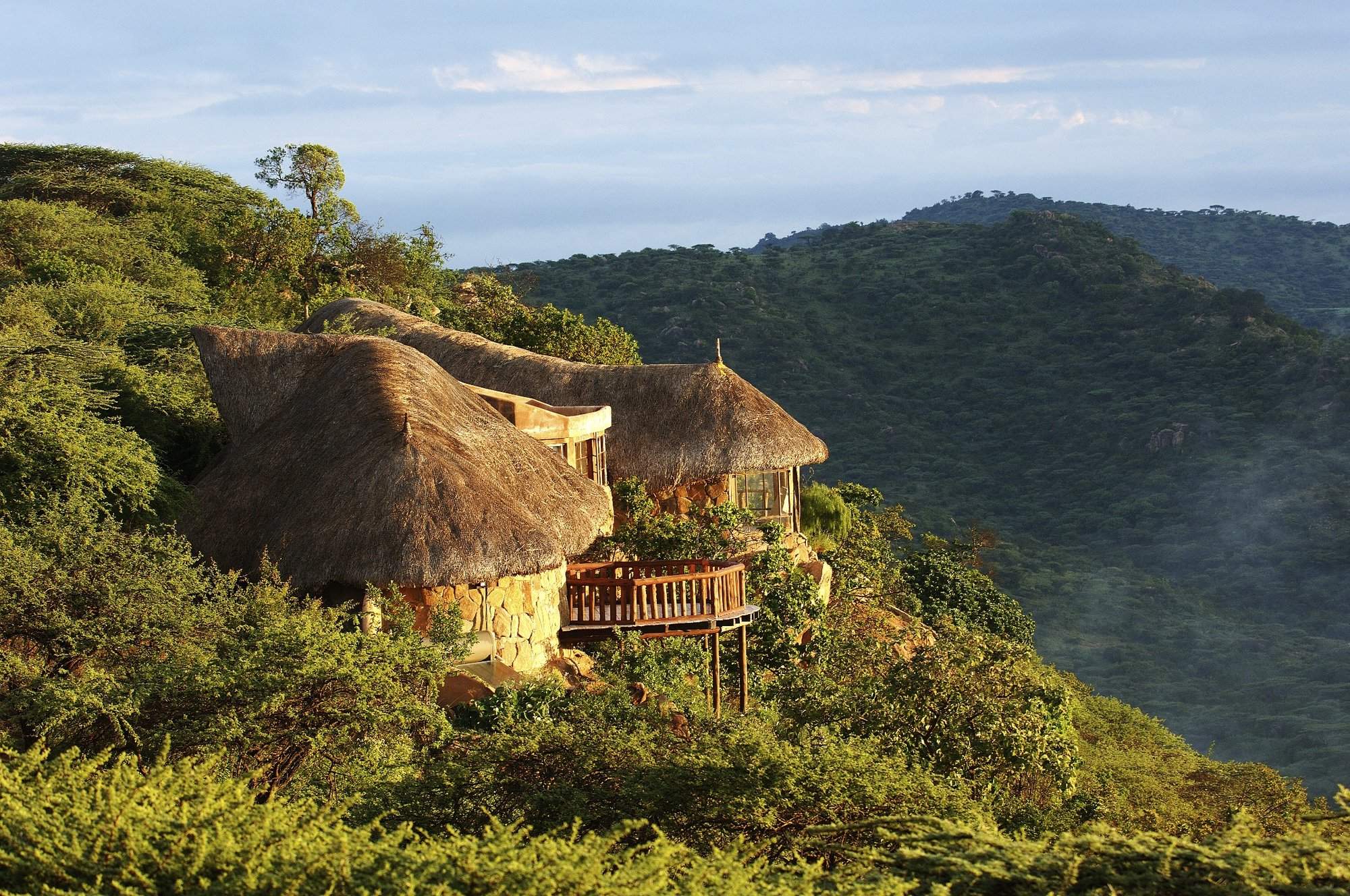
Sanctuary at Ol Lentille
The Sanctuary at Ol Lentille is an unusual safari lodge in northern Laikipia, consisting of three exclusive villas, and offering a huge range of activities.

Governors' Mugie House
Governors' Mugie House – a substantial, luxury safari lodge – is one of only two properties in the Mugie Conservancy in northwestern Laikipia.
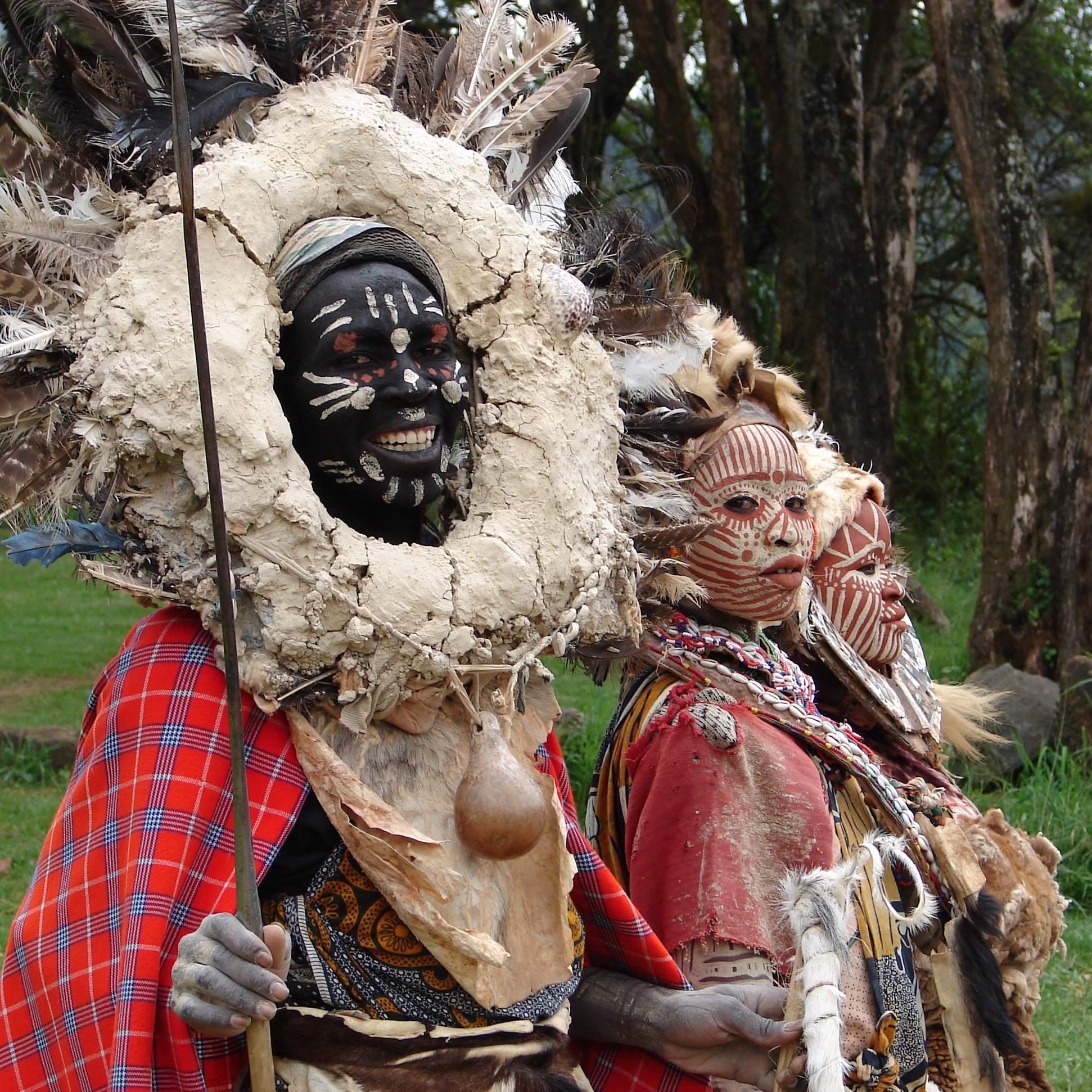
Thomsons Falls Lodge
Thomsons Falls Lodge is a simple hotel dating back to the colonial era, located above the falls of the same name, near the western Laikipia town of Nyahururu.
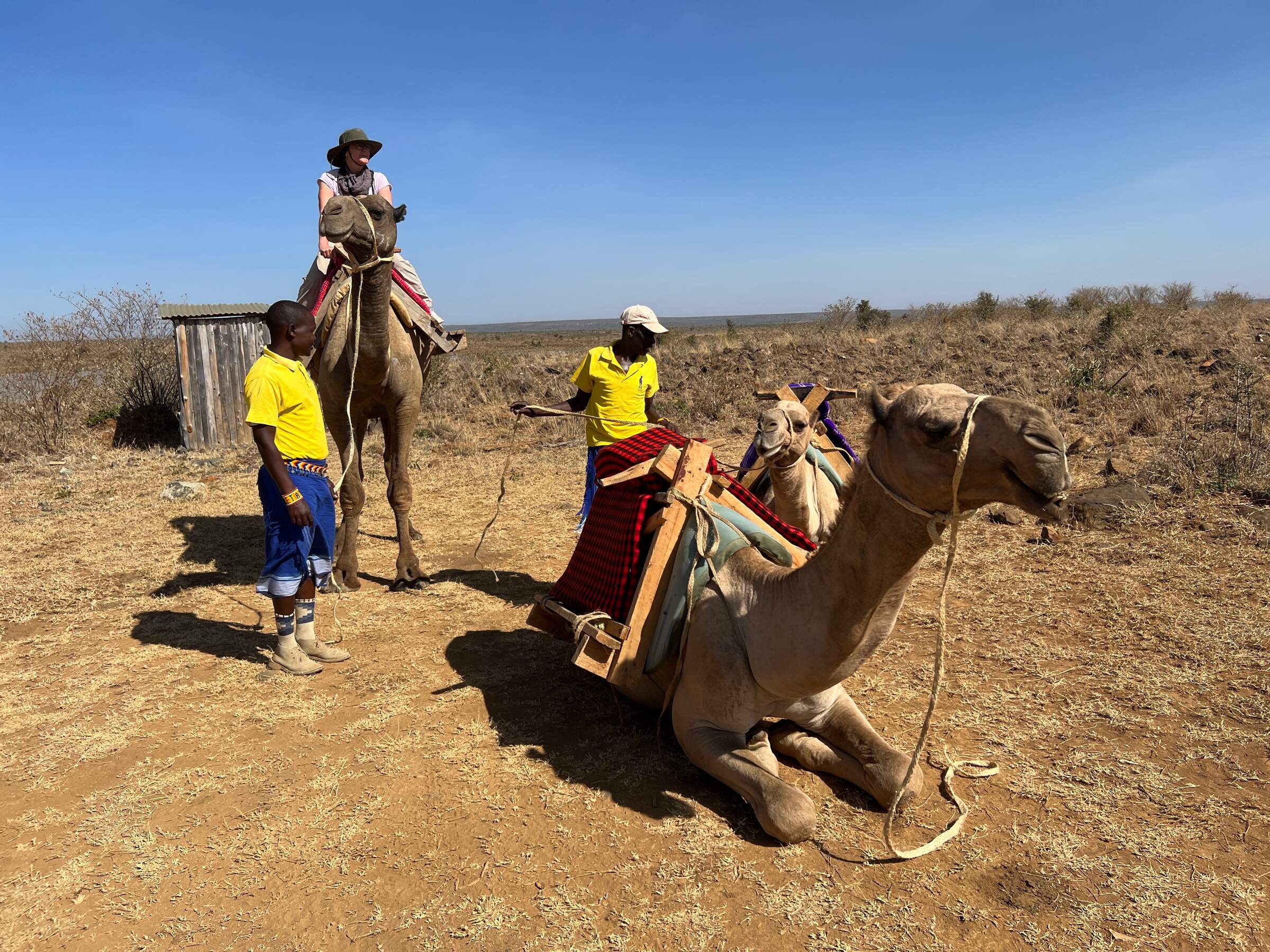
Ekorian's Mugie Camp
Ekorian's Mugie Camp is a pleasant, family-friendly safari camp in a remote location in northwestern Laikipia.
Our travellers’ wildlife sightings in Laikipia
Laikipia harbours a wealth of endangered species, including roughly half of Kenya’s 900-odd black rhinos. As browsers rather than grazers, black rhinos do well in the same environment as cattle as long as the bush isn’t cleared.
Also on the increase in Laikipia are wild dogs, with several packs here and good chances of seeing them: Laikipia is now their second most important range in Africa. Spotting Grevy’s zebras – the handsome, radar-eared, fine-striped species – is almost a certainty, as a quarter of Africa’s remaining population lives in Laikipia. You can find most of Kenya’s more common wildlife in Laikipia, too, as well as more than 2,000 elephants, which migrate between the slopes of Mount Kenya, the Laikipia safari conservancies and the Samburu region.
The animals in Laikipia, especially the rarer species, tend to be closely managed, with predators often radio-collared in order to track them, and wildlife rangers monitoring individual rhinos, keeping an eye on them day and night. While this might strike you as unnatural, it’s hard to argue with the results – better understanding of animal movements, behaviour and population trends, and even occasional opportunities for visitors to be directly involved in wildlife conservation activities.
Click on a species below for more information on the top locations in Laikipia for wildlife sightings, based on sighting reports from our travellers. How we work this out.

100% success

98% success

98% success

98% success

98% success

92% success

82% success

80% success

80% success

46% success

38% success

37% success

24% success

17% success

1% success

1% success
When to go to Laikipia
Laikipia’s climate varies considerably across the region and the climate crisis has made predicting the rains particularly hard. However, historically, there are clear patterns.
The typical dry seasons (December-March, July-October) are perfect for safaris, with generally clear skies and wildlife gathering at water sources. These are ideal conditions for spotting black rhinos and big cats in the Ol Pejeta and Lewa conservancies.
The wet seasons (generally a longer one from April-June, then shorter around November) turn the landscape lush and green. Though wildlife-viewing can be harder due to dense vegetation, it's great for landscape photography and birdwatching, with newborn animals easily seen, and great light conditions.
Year-round, Laikipia offers diverse experiences from walking safaris to stargazing. Its varied elevations (from around 1300m up to nearly 3000m) enhance its biodiversity and appeal.
Jan
Feb
Mar
Apr
May
Jun
Jul
Aug
Sep
Oct
Nov
Dec
Laikipia in January
Clear, warm days and mild nights make this a popular time for safaris in Laikipia. It's excellent for game viewing in all the conservancies, where water sources attract diverse wildlife. The dry conditions make it easier to spot black rhinos, lions and leopards. Star bed sleep-out options at a number of lodges are particularly magical under the clear night skies.
After the New Year period, many camps and lodges treat January as mid-season, offering good value. The landscape retains some greenery, enhancing photography.
- Clear days ideal for safaris
- Excellent visibility for wildlife viewing
- Dry riverbeds attract wildlife to water sources
- Calving season for wildebeest and antelopes
- Palearctic migrant birds abundant
Our view
Fantastic: the very best time to visit
Weather in January
Laikipia in February
With the short dry season well established in Laikipia, wildlife gathers close to water points, making it an excellent time for safaris. Ol Pejeta and Lewa Wildlife Conservancies offer prime viewing opportunities for endangered species like black rhinos and Grevy's zebras. Solio Rhino Conservancy provides exceptional black rhino sightings during this period. The grass is grazed down, improving visibility across the region.
February is ideal for walking safaris, where you can appreciate the smaller details of the ecosystem. The clear skies make stargazing from star beds an unforgettable experience. Cultural visits to local communities are particularly rewarding, as the pleasant weather encourages outdoor activities and interactions.
- Prime time for wildlife gathering near water
- Ideal conditions for walking safaris
- Palearctic migrant birds still present
- Low rainfall makes game drives rewarding
Our view
A very good time to visit
Weather in February
Laikipia in March
As March progresses in Laikipia, the weather becomes increasingly hot and humid with more rain likely later in the month. Through most of the month, conditions are still good for game drives in most districts. As the month advances, the buildup to the rainy season becomes apparent.
This period can offer unique photographic opportunities as animals congregate around diminishing water sources. Accommodation costs decrease as the low season approaches.
- Early month offers great wildlife viewing
- Hot weather transitions to occasional rains
- Lower visitor numbers
- Lush vegetation begins to appear
Our view
A good time to visit, with pros & cons
Weather in March
Laikipia in April
April usually sees established, serious rainfall in much of Laikipia, transforming the landscape. The southeast monsoon wind brings cooler temperatures and frequent downpours. While game viewing can be challenging due to lush vegetation, the green season offers unique experiences, with new-born animals visible among the verdant scenery.
The landscape bursts into life with vibrant colours, ideal for photography. Birdwatching is excellent with many species breeding. This is a quieter time for tourism, with lower accommodation rates at many places allowing for a more exclusive safari experience for great levels of service.
- Long rains begin, transforming landscapes
- Green season offers unique photo opportunities
- Lower rates at Laikipia's luxury lodges
- Buffalo and zebra calving season commences
- Birdwatching excellent
Our view
A good time to visit, with pros & cons
Weather in April
Laikipia in May
May in Laikipia is characterised by ongoing rains and lush vegetation. While game viewing can be trickier, the vibrant landscapes offer spectacular photographic opportunities with very little dust. The landscapes are a sea of green, with diverse and thriving flora.
This is an excellent time for birdwatching across the region as breeding season continues. The Ewaso Nyiro river swells impressively. Despite potential challenges, patient visitors may witness dramatic scenes of predators hunting in the thick vegetation.
- Lush vegetation makes wildlife spotting trickier
- Great for landscape and nature photography
- Rutting season for wildebeest and impalas
- Frog breeding season in Laikipia's wetlands
- Mount Kenya views improve with clearer air
Our view
A good time to visit, with pros & cons
Weather in May
Laikipia in June
As June progresses in Laikipia, the rains give way to slightly cooler, cloudy weather. This transition marks the beginning of a long, generally dry, high season for visitors. Game viewing improves as vegetation starts to thin, and conditions are comfortable.
The Ewaso Nyiro river, still full from the rains, attracts diverse wildlife. Accommodation rates begin to rise, reflecting the start of peak season.
- Rains subside, ushering in cooler weather
- High season begins with increased visitors
- Comfortable conditions game viewing
Our view
A good time to visit, with pros & cons
Weather in June
Laikipia in July
July in Laikipia brings cooler temperatures and ideal conditions for safaris. Animals concentrate around water sources on the conservancies, providing excellent game viewing opportunities.
July marks the peak of the high season, with higher accommodation rates and visitor numbers. The dry conditions make it easier to spot elusive species like leopards and black rhinos.
- Cool weather perfect for walking and riding
- Wildlife concentrates around water sources
- Excellent conditions for photography tours
Our view
A good time to visit, with pros & cons
Weather in July
Laikipia in August
August in Laikipia offers mild, dry weather, perfect for safaris. The conservancies teem with wildlife, including endangered species like black rhinos and Grevy's zebras. The landscapes offer stunning vistas and excellent conditions for game drives and walking safaris. The dry conditions make it easier to spot big cats across the region. This is peak season, so expect higher visitor numbers and accommodation rates.
You might consider combining your Laikipia safari with a stay at the nearby Samburu National Reserve, known for its “northern five” species – Grevy’s zebra, reticulated giraffe, beisa oryx, gerenuk and Somali ostrich.
- Peak season for wildlife viewing in Laikipia
- Mild weather ideal for outdoor activities
- Busy period requires advance bookings
Our view
A good time to visit, with pros & cons
Weather in August
Laikipia in September
As September progresses in Laikipia, the weather typically remains dry with clearing skies, signalling excellent safari conditions. Early September can be busy, but visitor numbers decrease later in the month. In the conservancies, game viewing is exceptional as animals congregate around limited water sources.
September generally offers excellent conditions for photography.
- Hot, dry weather with good visibility
- Quieter period for more exclusive safaris
- Natural bush fires flush out insects and small animals for predators
Our view
Fantastic: the very best time to visit
Weather in September
Laikipia in October
October in Laikipia brings generally hot and mostly dry conditions, ideal for safaris. It's a favourite month for many visitors due to the good weather and fewer visitors. The conservancies offer excellent game viewing, with animals concentrated around water sources. The Solio Rhino Conservancy provides exceptional rhino sightings in the dry conditions.
Birdwatching is rewarding as Palearctic migrants begin to arrive. Cultural visits to Maasai communities remain a highlight. Consider combining your Laikipia safari with a trip to the nearby Samburu National Reserve for a diverse wildlife experience.
- Warm or hot and mostly dry conditions for safaris
- Migratory birds start arriving
- Perfect for photography
Our view
A very good time to visit
Weather in October
Laikipia in November
November in Laikipia marks the beginning of the short rains, usually in the latter half of the month. This transition brings about dramatic changes in the landscape. Early November can still offer good game viewing before the rains intensify. Then the bush begins to green, creating beautiful scenery.
As the low season begins, accommodation rates decrease, and visitor numbers drop too, allowing for a more exclusive safari experience. Birdwatching becomes excellent with the arrival of many migratory species. November is ideal for photographers capturing the changing landscapes and dramatic skies, with low dust and clear air. Cultural visits to Maasai communities offer insights into how local life adapts to the changing seasons.
- Short rains begin, transforming landscapes
- Low season offers better rates and privacy
- Excellent time for birdwatching in Laikipia
- Lush scenery provides stunning backdrops
Our view
A good time to visit, with pros & cons
Weather in November
Laikipia in December
In a typical December, Laikipia sees the short rains finish by mid-month, leaving the landscape at its most beautiful. Clear blue skies return, heralding the start of the second peak visitor season from around 20 December onwards. The conservancies offer excellent game viewing with lush backdrops.
Christmas can occasionally be wet, but most years see perfect safari conditions by the festive season. This is an ideal time to combine wildlife viewing with cultural experiences, such as visiting Maasai communities.
- Rains typically end, leaving landscapes lush
- Peak tourist season begins mid-month
- Christmas safaris popular in conservancies
- Night sky clarity ideal for stargazing
Our view
A good time to visit, with pros & cons
Weather in December
Laikipia: In detail
Laikipia
Within Laikipia are various conservancies that offer a variety of experiences and accommodation options. Find out more about these:
Lewa Wildlife Conservancy
If you’re a runner, you might want to know about the Lewa Marathon, run on the conservancy every June to raise funds for conservation and development. You could combine a safari with running with the wildlife, along with more than 1,000 other entrants from Kenya and around the world.
Borana Conservancy
Borana is home to some 300 elephants (including 12 radio-collared matriarchs), four prides of lions, hyenas and cheetahs and a maximum of 32 visiting humans on safari. If you’re one of the latter, you can see the stunning landscapes of the ranch from a 4WD vehicle, on foot, on horseback (they have a stable of 26 horses suitable for experienced riders, plus other ponies for novices and children) or on a mountain bike.
The most recent arrivals at Borana are 19 black rhinos, translocated here in 2013 from neighbouring Lewa, with which Borana has recently combined territories by eliminating the fence between the ranches.
Solio Conservancy
While the ranch has been here for decades, Solio Lodge is a modern addition – a slick and spectacular hotel-style set up of six huge cottages with panoramic windows, luxuriously appointed bathrooms and open fireplaces. One of the cottages is family- sized and faces a small waterhole. As well as game drives, with virtually guaranteed rhino sightings, you can walk, cycle or ride among the wildlife (the lodge has its own stables) and do trips into the nearby Aberdare and Mount Kenya national parks.
Lekurruki
The wildlife conservation charity, Tusk Trust, has provided more than 20 rangers to patrol the livestock-free areas of the ranch in which cattle are not grazed. Although wildlife at Lekurruki can be hard to spot, this is excellent country for walking, birdwatching and appreciating the wilderness. And if you’re interested in learning about the local Mokogodo Maasai community, you’ll be able to make uncontrived visits to local villages and community projects.
El Karama Conservancy
The wildlife here is excellent, and can be outstanding, with good numbers of plains grazers always in evidence, including the rare Grevy's zebra and endangered Jackson's hartebeest, as well as plenty of elephant, fine reticulated giraffe showing off their boldly patterned hides against the backdrop of Mount Kenya, and lions and other predators, including occasional sightings of wild dog packs. Bush walks are conducted here by a very experienced, armed guide.
Ol Pejeta Conservancy
With its rolling short-grass plains with thickets of acacia woodland, the 365km² conservancy has big concentrations of mammals, including all the native plains game, especially black rhinos. Critically, however, it combines cutting-edge wildlife conservation work with running the world’s largest herd of Boran cattle, Africa’s best beef producer. At night, the cattle are herded into mobile ‘bomas’ – predator-proof compounds – and by day they graze the conservancy savannah, under the watchful eyes of their herders, stimulating new pasture growth for the wildlife in a balanced system that shows that, when carefully managed, livestock and wildlife can co-exist.
Part of Ol Pejeta, in the east, was formerly the Sweetwaters Rhino Sanctuary. This is now fully incorporated into the rest of the conservancy and it includes a special compound for a blind black rhino called Baraka, who acts as an icon for Ol Pejeta and is slowly being acclimatised to human company. The rest of Ol Pejeta’s 100-plus black rhinos are much less easily seen, deliberately tucking themselves into dense bush in order to browse. Much easier to spot are the conservancy’s 19 southern white rhinos, as they tank their way across the plains towards the next bit of succulent grazing.
Most of the rhinos at Ol Pejeta have had their horns trimmed to reduce their value to poachers, but with rhino horn now worth up to $50,000 or more per kilo, the danger of poaching is critical: when you are on safari at Ol Pejeta, you are constantly aware of conservation issues and the huge stakes involved.
Sosian Conservancy
The ranch works with its neighbour, Mpala Ranch, on predator research, particularly focusing on the wild dog packs that roam Laikipia. At Sosian, wild dogs can often be seen relatively easily, using radio-tracking equipment to track the collared individuals.
Il Ngwesi Conservancy
Ol Doinyo Lemboro Ranch
The wildlife here is diverse: it’s good leopard country, has plentiful grazers and is home to hundreds of elephants. The region swarms with dik-diks and these form the main diet of the two wild dog packs that roam the area and are a highlight for visitors. Since 2012, both packs have denned on Ol Doinyo Lemboro or neighbouring Mpala Ranch.
Map of Laikipia
Choices for where to stay in Laikipia

Laikipia: Safaris
Laikipia is one of the best areas of Kenya for active safaris. With the wildlife conservancies all under private or community management, the standards of conservation oversight and visitor-hosting are second to none. You can track wild dogs using radio-telemetry equipment; go on a wildlife walk through the bush with an armed guide, spotting elephant, giraffe and zebra; ride camels or horses; swim in the lodge swimming pool or plunge in the local river. Wherever you stay in Laikipia, there's a multitude of activities – just not a multitude of other visitors.

Purple Grenadier Fly-In Safari
6 days • 2 locations
NAIROBI AIRPORT TO NAIROBI AIRPORT
Fantastic guiding from intimate, well-run mid-range tented camps, in superb conservancy locations: this safari is all about making the most of the incredible wildlife in Laikipia and the Maasai Mara.
US$6,390 - US$8,800 per person

African Finfoot Fly-in Safari
7 days • 3 locations
NAIROBI AIRPORT TO NAIROBI AIRPORT
After a unique start in Nairobi National Park, classic, luxurious camps combine for a high-end and exclusive safari in fantastic wildlife destinations.
US$11,230 - US$17,340 per person

African Hawk-Eagle Fly-in Safari
7 days • 2 locations
NAIROBI AIRPORT TO NAIROBI AIRPORT
Two luxurious camps provide relatively quiet game-viewing within Laikipia and the Mara ecosystem. Situated on private conservancies, both Lewa Wilderness and Naboisho offer the chance to sight all of the "Big 5" and to enjoy a range of safari activities.
US$9,360 - US$16,430 per person

Hamerkop Fly-In Safari
8 days • 2 locations
NAIROBI AIRPORT TO NAIROBI AIRPORT
Different wildlife, contrasting camps and a whole host of activities, this is a safari for those wanting to get out and about and not just sit in a vehicle.
US$7,430 - US$10,960 per person

Greater Kudu Fly-In Safari
7 days • 2 locations
NAIROBI AIRPORT TO NAIROBI AIRPORT
Experience a truly authentic bush experience on this safari at two classic tented camps, in Laikipia and the Maasai Mara. These are some of the best places to spot wild dogs and big cats.
US$8,130 - US$9,080 per person

Rothschild Giraffe Safari
8 days • 3 locations
NAIROBI AIRPORT TO NAIROBI AIRPORT
A example of a luxury Kenyan safari, starting at the iconic Giraffe Manor before fabulous stays on the spectacular Solio Reserve and Sala’s Camp in a remote corner of the Maasai Mara.
US$12,650 - US$17,830 per person

Big Cat Fly-in Safari
8 days • 2 locations
NAIROBI AIRPORT TO NAIROBI AIRPORT
Combining two of Kenya’s best wildlife-viewing areas, this slow-paced safari to the Lewa Conservancy and Maasai Mara guarantees iconic wildlife. The long-established, well-rated camps are great value, too.
US$5,690 - US$8,850 per person

Golden Jackal Fly-in Safari
8 days • 2 locations
NAIROBI AIRPORT TO NAIROBI AIRPORT
A contrasting safari of a lodge and a tented camp, with action-packed activities in Laikipia and wildlife-filled game drives in the Maasai Mara, offers a consistently high-quality experience.
US$11,200 - US$14,130 per person

Tawny Eagle Fly-in Safari
7 days • 2 locations
NAIROBI AIRPORT TO NAIROBI AIRPORT
Explore Laikipia and the Maasai Mara ecosystem with stays in the Ol Pejeta and Naboisho conservancies. Two smart yet authentically rustic bush camps provide a traditional safari experience, offering a high standard of guiding and excellent level of care.
US$4,560 - US$8,630 per person

Wahlberg's Eagle Fly-in Safari
6 days • 2 locations
NAIROBI AIRPORT TO NAIROBI AIRPORT
A great value safari in Laikipia and the Maasai Mara that provides an immersive, authentic bush camp experience with activities for families of all ages.
US$5,680 - US$6,450 per person

Gabar Goshawk Fly-in Safari
7 days • 3 locations
NAIROBI AIRPORT TO NAIROBI AIRPORT
Experience Amboseli and Laikipia during this economically priced safari. Two simple camps offer adventure before a stopover in Nairobi and a final stay in the charming, wildlife-rich Il Ngwesi Eco-Lodge.
US$6,580 - US$6,580 per person
Best 25 lodges and safari camps in Laikipia
Listed below are our recommendations for nice places to stay in Laikipia. Ask us for more details of what's where, and what's likely to suit you best!

Kicheche Laikipia
Kicheche Laikipia is the most luxurious tented camp of the handful of places to stay in the Ol Pejeta Conservancy in central Laikipia.

Laikipia Wilderness
Laikipia Wilderness is a rustic owner-managed bush camp, in excellent wild dog territory, offering outstanding guiding.

Lewa Safari Camp
Lewa Safari Camp is a comfortable and homely tented lodge, located in the Lewa Conservancy and offering a relatively exclusive safari away from mass tourism.

Lewa Wilderness
Lewa Wilderness is a comfortable, fenced safari lodge with nine cottages, great views and a huge range of activities.

El Karama Lodge
El Karama is a comfortably rustic, very personal, riverside eco-lodge on a game-rich private ranch in Laikipia, an hour’s drive north of Nanyuki airport.

Sosian
Sosian Lodge is a distinctive, estancia-style ranch house on a former cattle ranch, with great opportunities for riding, relaxing and seeing wild dogs and other savannah wildlife.

Il Ngwesi Eco-Lodge
The community-owned Il Ngwesi Eco-Lodge sits atop a small hill in the remote Il Ngwesi Group Ranch, a two-hour drive north of Lewa Conservancy in north-eastern Laikipia.

Ol Pejeta Bush Camp
Ol Pejeta Bush Camp is a simple camp, with comfortable tents, delivering an authentic wilderness experience backed up by good food and guiding.

Porini Rhino Camp
Porini Rhino Camp is a small, simple, well established tented camp, with a keen focus on sustainable and low-impact tourism.

Solio Lodge
Solio Lodge is an exclusive and luxurious bush lodge set in the private Solio Game Ranch in southern Laikipia.
Excursions in Laikipia
Optional, extra day-trips and excursions that are possible while you’re staying in Laikipia. Talk to us: these excursions are usually best arranged before you go.
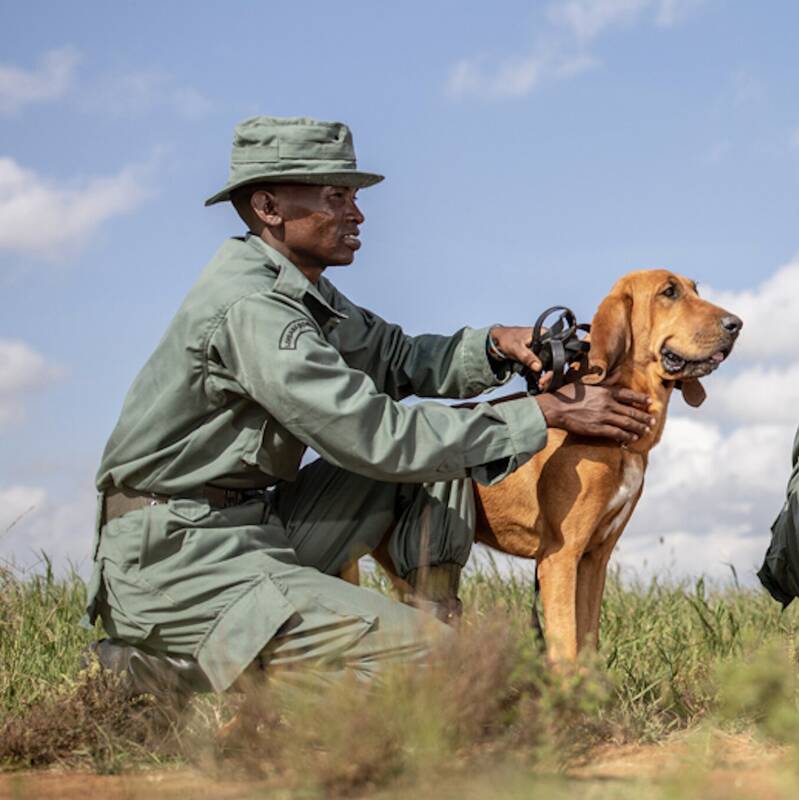
Anti-poaching Dogs Display
Approx. one hour
Interact with the dog keepers and learn about what it takes to look after the specially trained canine team. Guests are encouraged to try and evade the sniffer dogs, not only is this great fun, but it helps to offer genuine training for the dogs.
More about Anti-poaching Dogs Display
Northern White Rhinos visit
One hour, usually as part of your drive
Visit the Endangered Species Enclosure at Ol Pejeta Conservancy for a close encounter with the last two remaining northern white rhinos. You can visit either by game drive vehicle or visit on horseback if you're an experienced rider. Other rare species include Jackson's hartebeests and Grevy's zebras.
More about Northern White Rhinos
Scenic Biplane Flight on Lewa Conservancy
30 or 60 minute flights
Soar high and fly low over the rolling hills and plains of Laikipia’s famed Lewa Conservancy, on a scenic biplane flight. Offering you the chance to spot wildlife from the air, this flight takes place in an open-cockpit WACO biplane – a truly unique excursion in Kenya.
More about Scenic Bi-plane Flight
Looking for inspiration on where to travel next?
Visit our trip chooser to explore your options and find inspiration for your perfect African adventure
Inspire me


